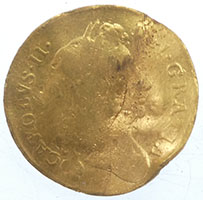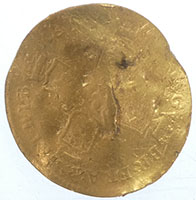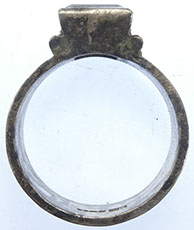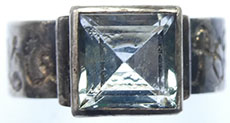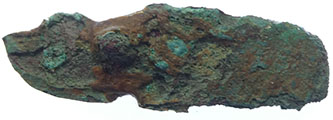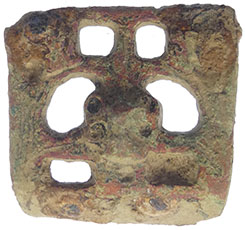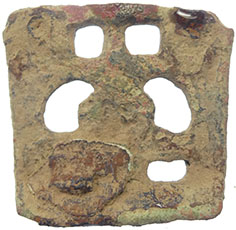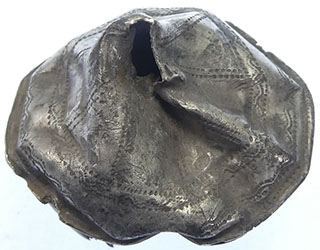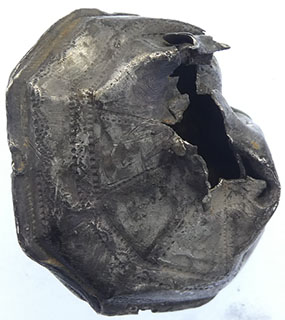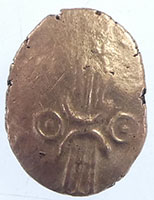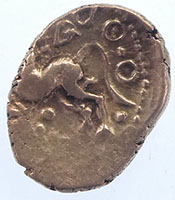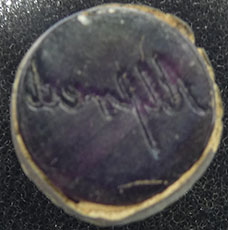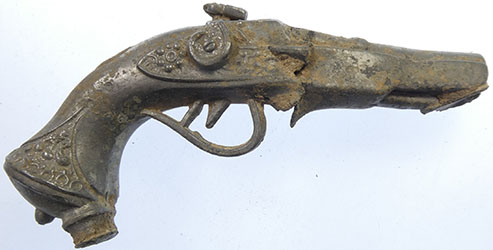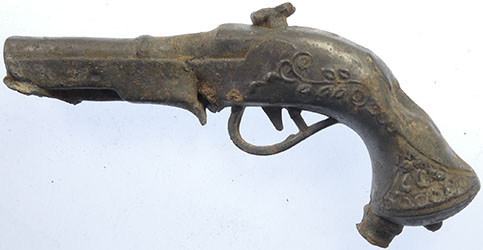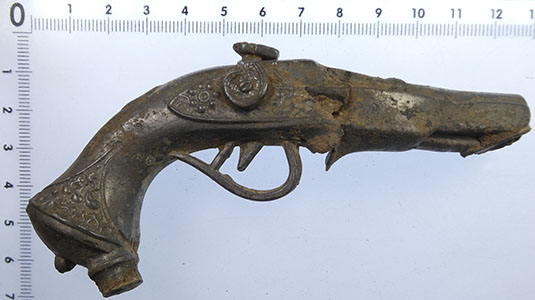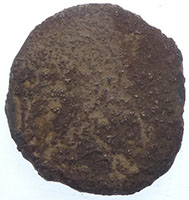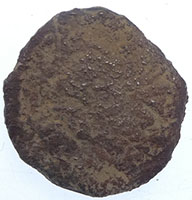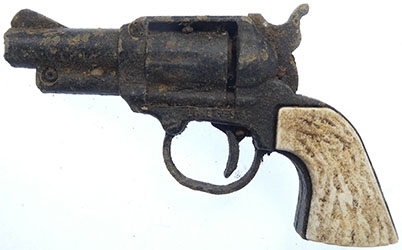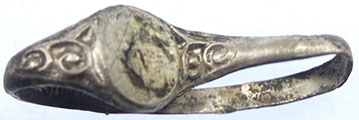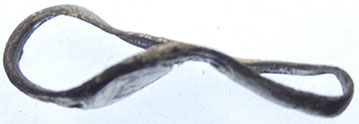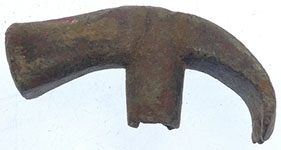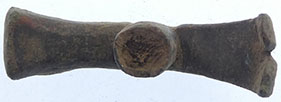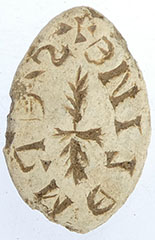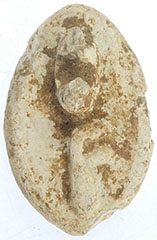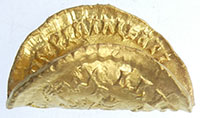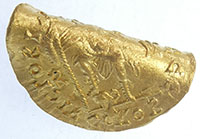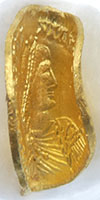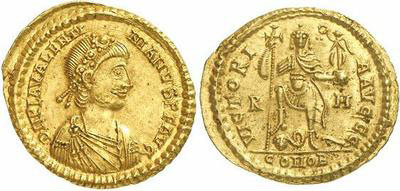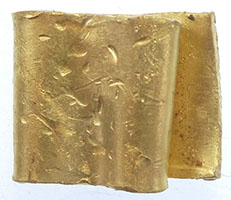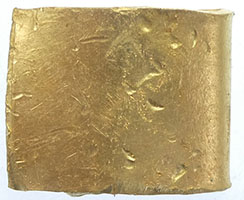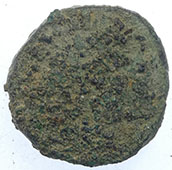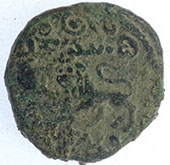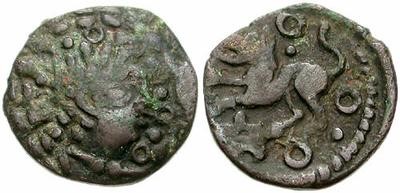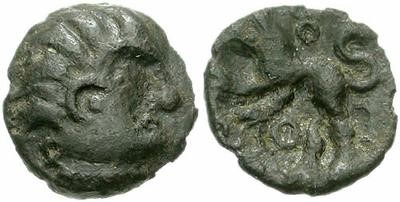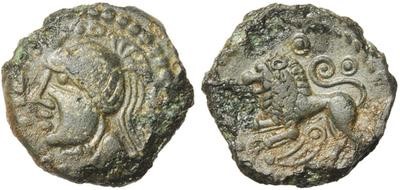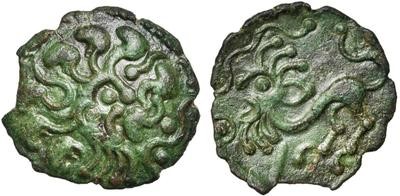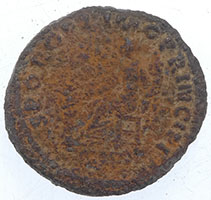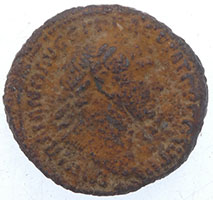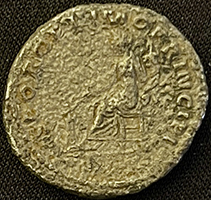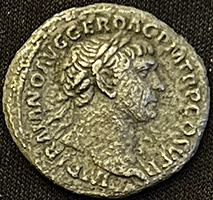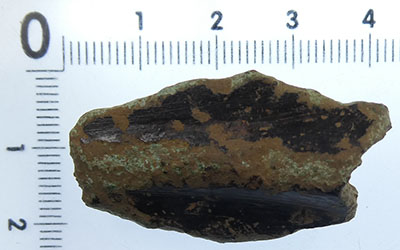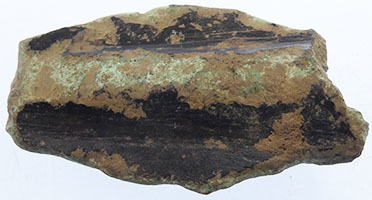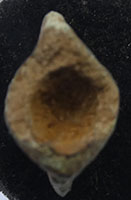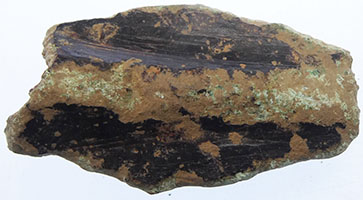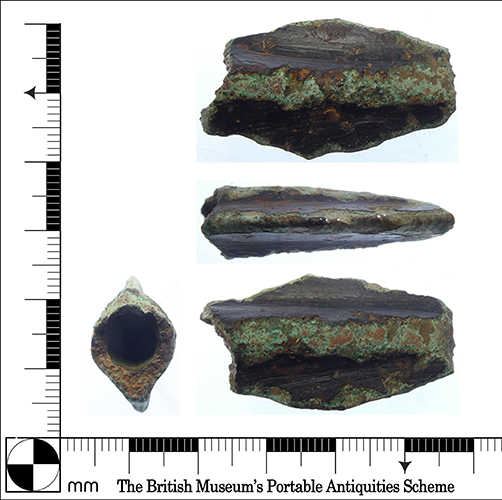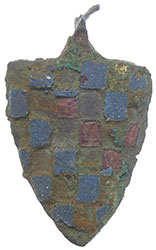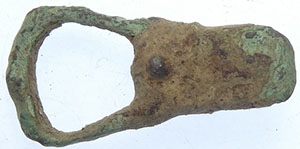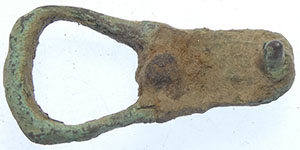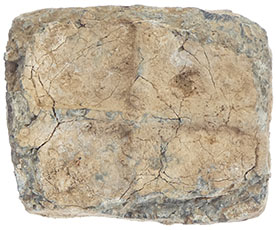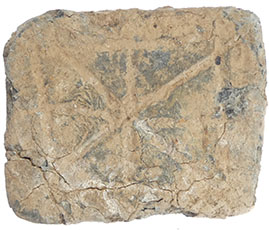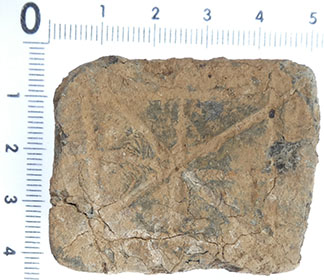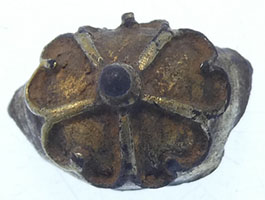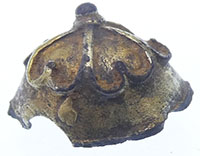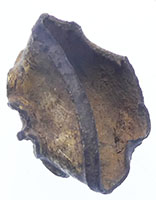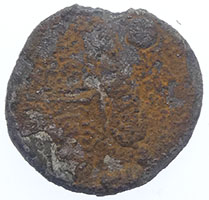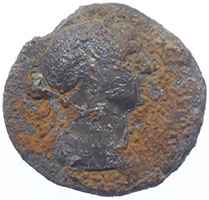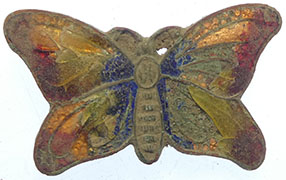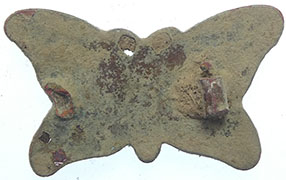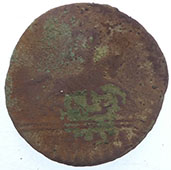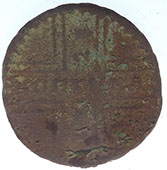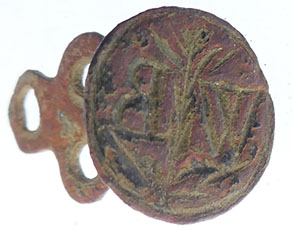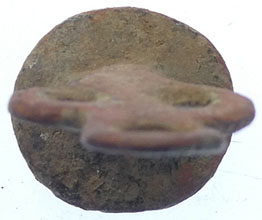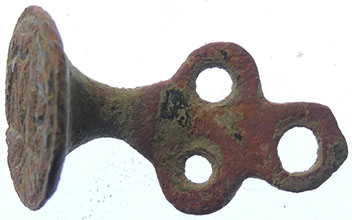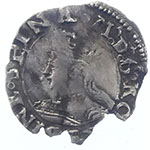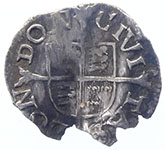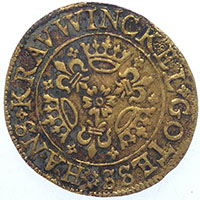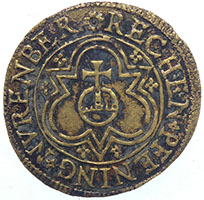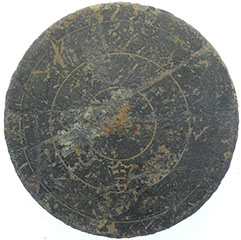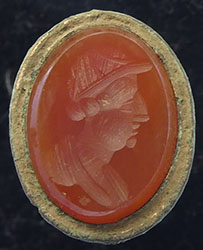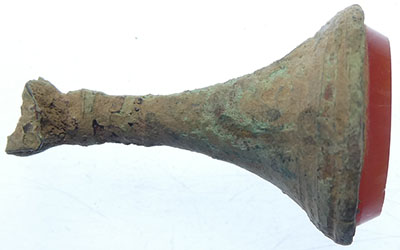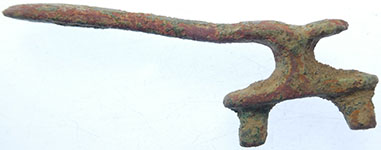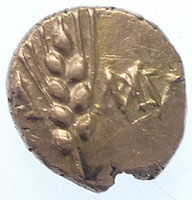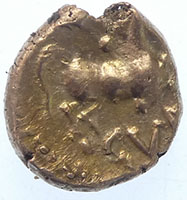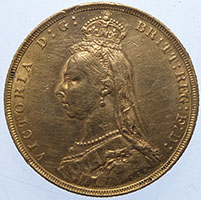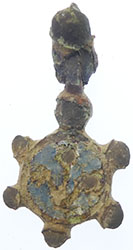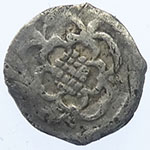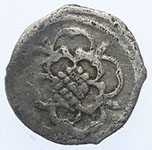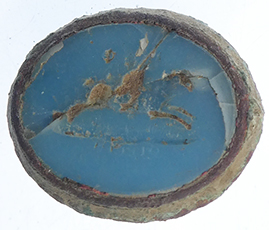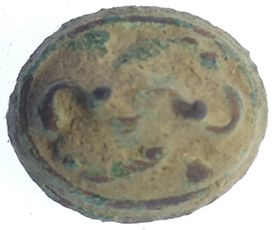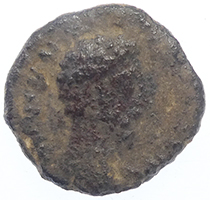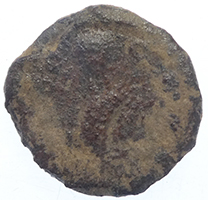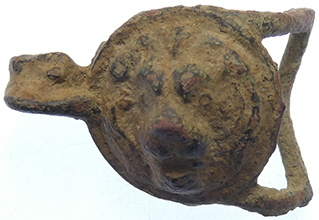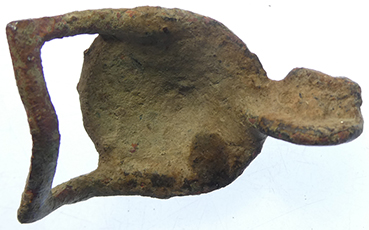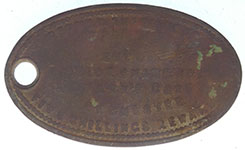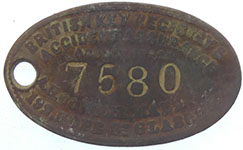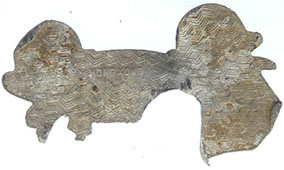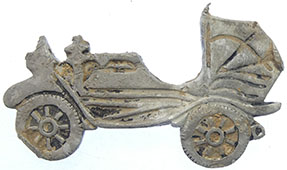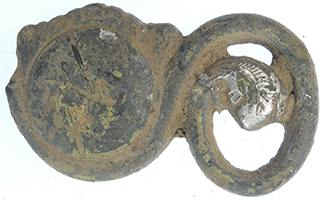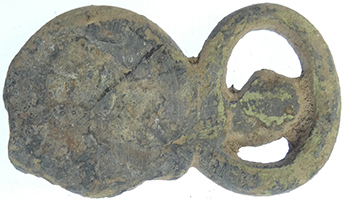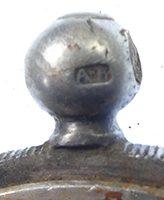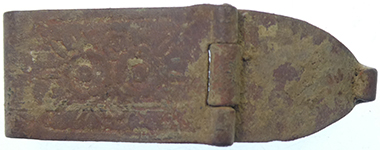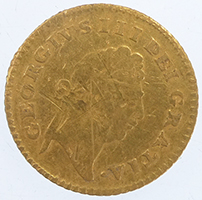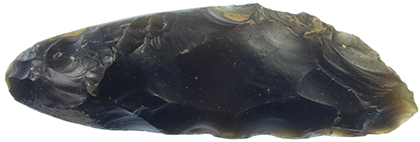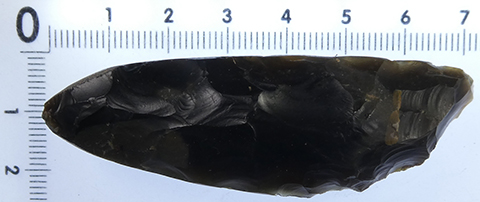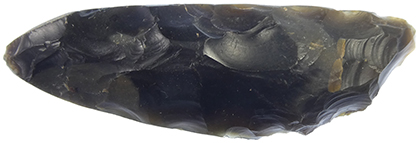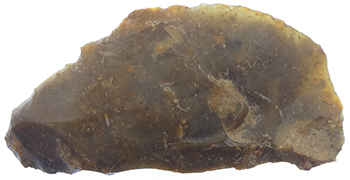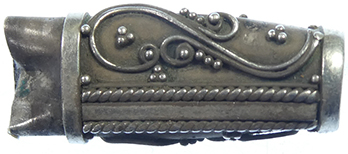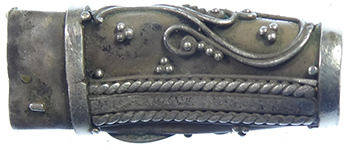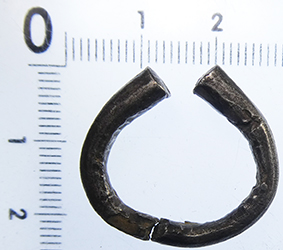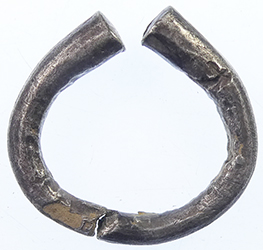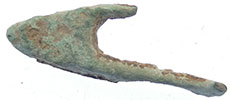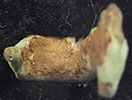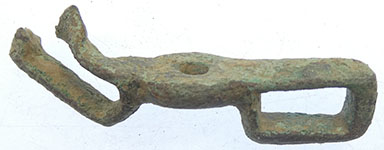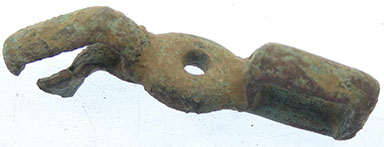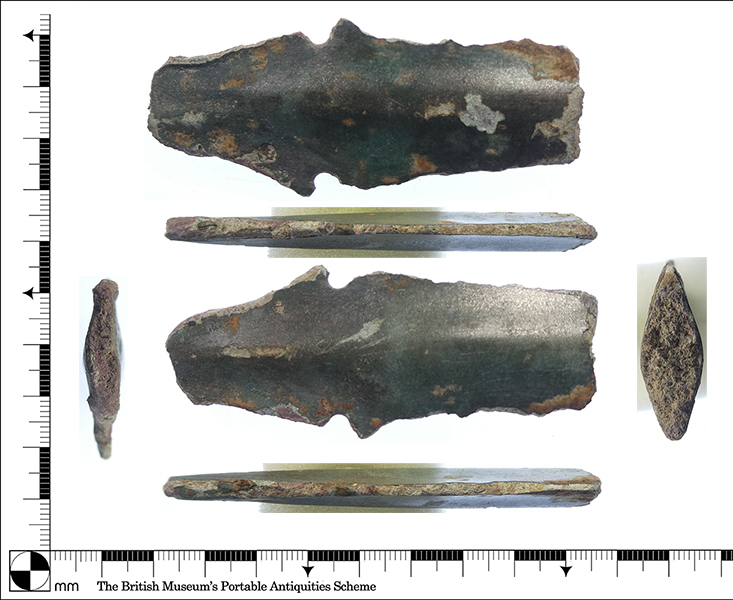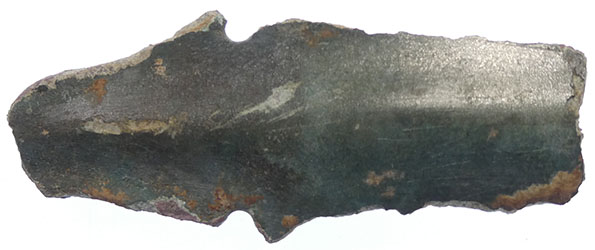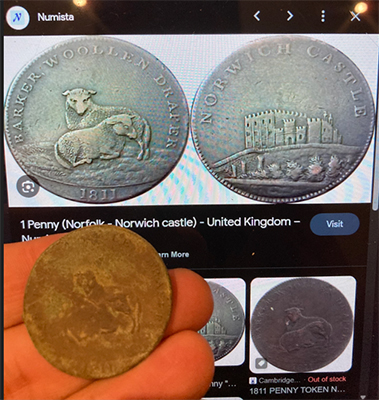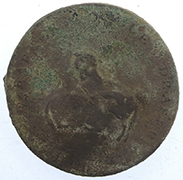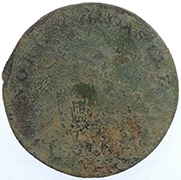

Metal detecting holidays in England with the World's most successful metal detecting club.20 years plus.
Twinned with Midwest Historical Research Society USA.
2023 Oct finds page |
1672-84 Charles II milled gold half guinea- 2nd bust - 3.72g, 21.38mm |
|||||||||
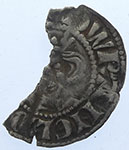 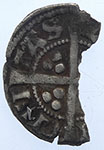 |
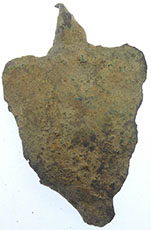 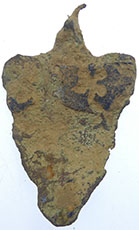 |
||||||||
1327 Edward III hammered silver penny Obv EDWR ANGL D*** Rev CIVI/TAS** |
Medieval enamelled heraldic pendant | ||||||||
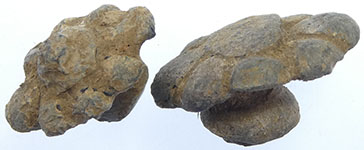 |
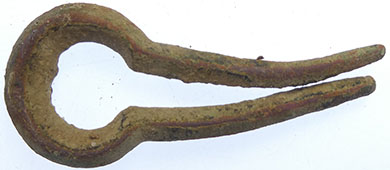 |
||||||||
| Georgian lead tobacco jar lid handles | Georgian Jews harp | ||||||||
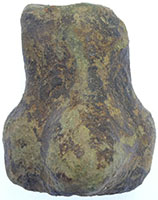 |
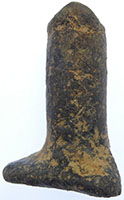 |
 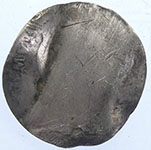 |
|||||||
| Medieval pot leg | Medieval pot leg | 17thC William III milled silver sixpence - love token | |||||||
 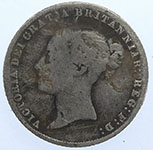 |
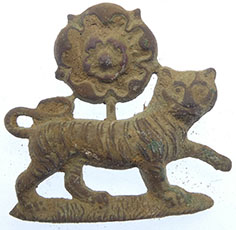 |
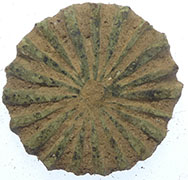 |
|||||||
| 1858 Victoria milled silver sixpence | WWII Leicestershire regiment badge | Georgian pastry jigger | |||||||
Very interesting chunky hand made silver ring - I not certain but this could be a large diamond Silver ring with stone -full hallmarks 2006 - .925 silver - London mint date letter g Maker - MA 7.6g,22.08mm |
|||||||||
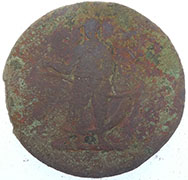 |
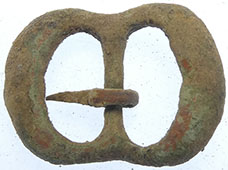 |
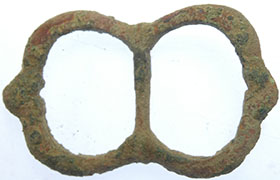 |
 |
||||||
| 19thC button | 1500-1700 buckle | 1500-1700 buckle | 17thC lead token | ||||||
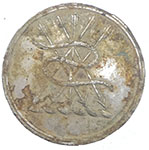 |
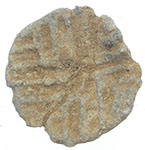 |
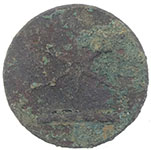 |
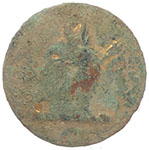 |
||||||
| 19thC livery button | 17th C lead token | 19thC livery button | 19thC livery button | ||||||
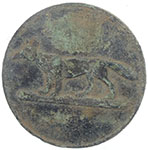 |
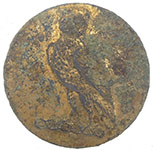 |
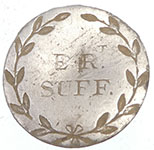 |
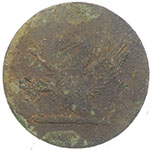 |
||||||
| 19thC livery button | 19thC livery button | Unknown military button E..R SUFF Sufolk Militia ? |
19thC livery button | ||||||
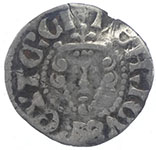 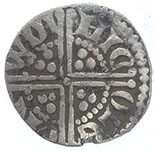 |
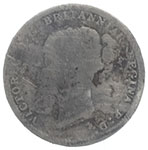 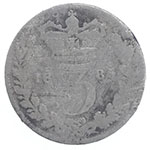 |
||||||||
1247 Henry III hammered silver voided long cross penny -Class IIa Obv hEN'RICVS REX TE'RCI Rev NIC/OLE/***/WOI ?? Unknown mint |
1855 Victoria milled silver three pence | ||||||||
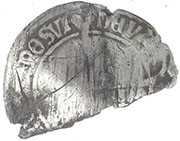 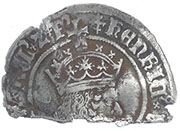 |
  |
||||||||
| 1504-5 Henry VII hammered silver groat Cross-crosslet | 1247 Henry III hammered silver voided long cross half penny Rev |
||||||||
|
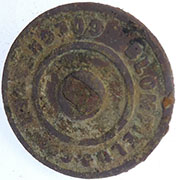 |
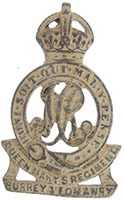 |
|||||||
| Medieval mount | Bloomfield & Co Colchester mount | WWII Queen Mary Regiment badge Surry Yeomanry |
|||||||
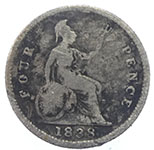 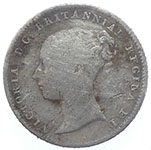 |
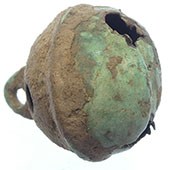 |
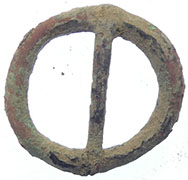 |
|||||||
| 1838 Victoria milled silver four pence | Georgian horse harness bell | Medieval annular buckle | |||||||
 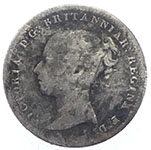 |
 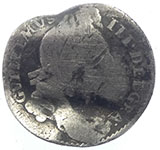 |
||||||||
| 1842 Victoria milled silver four pence | 1696 William III milled silver sixpence - love token | ||||||||
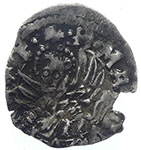 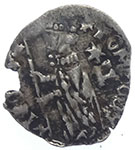 |
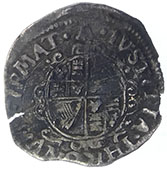 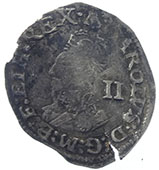 |
||||||||
| Italian States-Venice, Antonio Venier as Doge (1382-1400), Soldino, Venice Mint + . ANTO. VE_NERIO DVX . Doge standing left, holding banner, * | F across fields + . S . MARCVS . VENETI . Winged lion of St. Mark facing left, holding book with both front paws, all in inner circle Plain Edge |
1634-5 Charles 1st hammered silver half groat- Bell mint mark | ||||||||
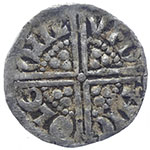 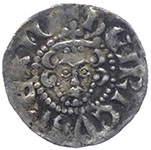 |
|
||||||||
1247 Henry III hammered silver voided long cross penny- Class 3a Obv hENRICVS REX III Obv NIC/OLE/ONL/VND - Moneyer Nicole of London mint |
Early medieval gilded mount | ||||||||
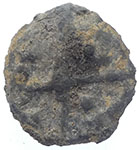 |
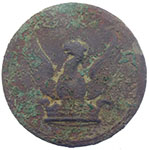 |
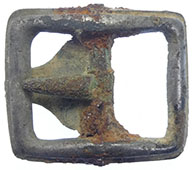 |
 |
||||||
| 15thC lead token | 19thC livery button | Georgian spur buckle | 1500-1700 mount | ||||||
c10thC Saxon stirup mount - Type 1 group 1 - Class B The central head has an aperture for its mouth and its sunken eyes and ears give it a curious aspect- Two Fe rivets survive. Ref D Williams 399 |
|||||||||
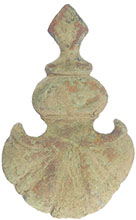 |
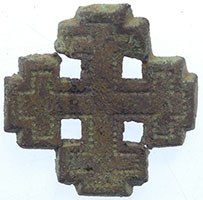 |
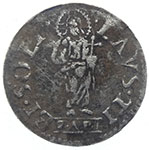 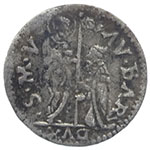 |
|||||||
| Georgian mount | Medieval Knights Templar badge | Agostino Barbarigo LXXXIV Doge (1486-1501)
|
|||||||
 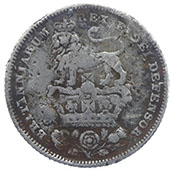 |
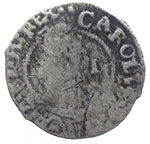 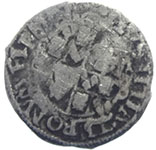 |
||||||||
| 1826 George IV milled silver shilling | 1641-3 Charles 1st hammered silver penny - mintmark 2 dots |
||||||||
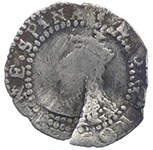 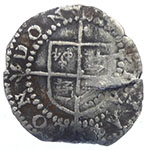 |
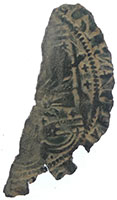  |
||||||||
| 16thC Elizabeth 1st hammered silver penny | The Standing King series Charles IV 1322-28 French Jetton Obv 'king with sceptre standing beneath a gothic canopy' |
||||||||
 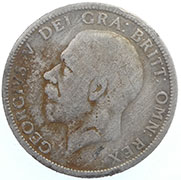 |
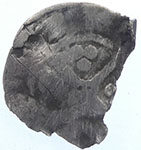 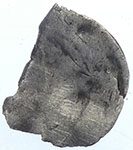 |
||||||||
| 1929 George V milled silver florin (24 pence) | Medieval hammered silver lonmg cross penny Rev quadrefoil with pellet in reverse cross - York mint |
||||||||
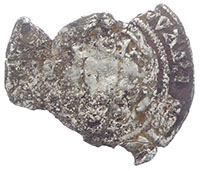 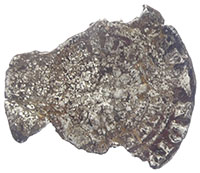 |
|
||||||||
1327 Edward III hammered silver groat Rev CIVI/TAS/LON/DON - London mint |
Large hollow Victorian silver pendant | ||||||||
 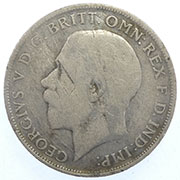 |
 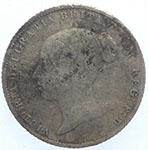 |
||||||||
| 192 George V milled silver florin (24 pence) | 1854 Victoria milled silver sixpence | ||||||||
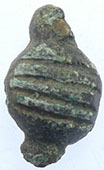 |
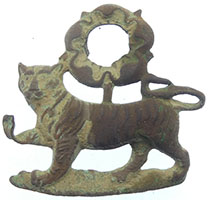 |
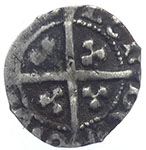 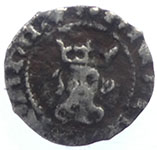 |
|||||||
| Roman mount | WWII Leicestershire regiment badge | 1399-1413 Henry IV hammered silver half penny- star mint mark Obv hENRIC REX ****AN ** Rev CIVI/TAS/LON/DON - London mint |
|||||||
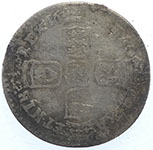 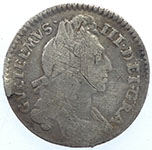 |
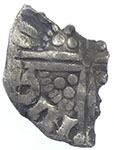  |
||||||||
| 1697 William III hammered silver sixpence | 1247 Henry III hammered silver voided long cross penny fragment | ||||||||
Dubnovellaunos 25 BC to 5 AD Celtic gold qtr stater 1.35g, 13.19 mm |
|||||||||
 |
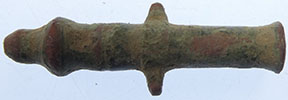 |
 |
|||||||
| 19th C bayonet frog | 18thC toy cannon | 1500-1700 mount | |||||||
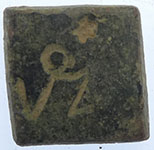 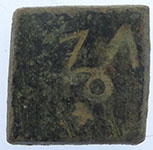 |
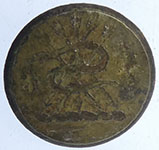 |
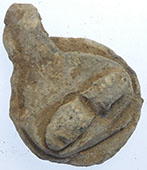 |
|||||||
| 18thC apothecary weight | 19thC livery button | Post medieval lead cloth seal | |||||||
 |
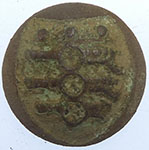 |
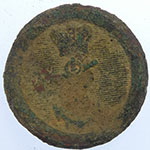 |
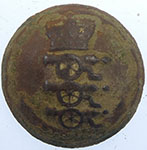 |
||||||
| Royal Engineers lapel badge | 18thC Royal Artillery button | RN Capt / Commander - 1812 RN Lieutenant - 1812 RN Midshipman - 1812 RN Volunteer Gr.I - 1812 |
Post 1831 version - three cannons pointing left with the Royal crown over- The design was changed in 1840 with the addition of the 'Ubique' scroll below the lower cannon | ||||||
 |
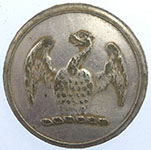 |
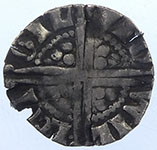 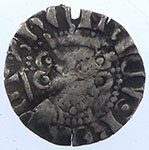 |
|||||||
| George V Royal Engineers button | 19thC livery button | 1247 Henry III hammered silver voided long cross penny- Class5 Obv hENRICVS REX III Rev WILL/EM/ONL/LVND - Moneyer Willem of London mint |
|||||||
 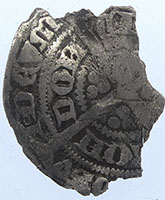 |
  |
||||||||
1327 Edward III hammered silver groat Obv RANC + ED****** Rev CIVI/TAS/LON/DON - London mint |
2ndC Roman fibular brroch | ||||||||
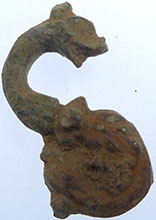 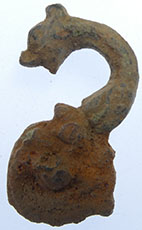 |
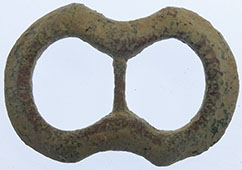 |
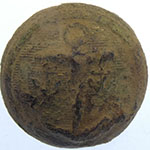 |
|||||||
| Medieval buckle | 1500-1700 buckle |
|
|||||||
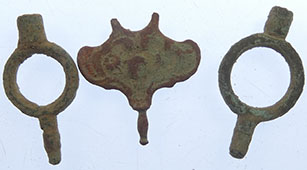 |
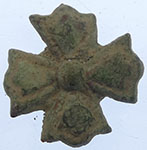 |
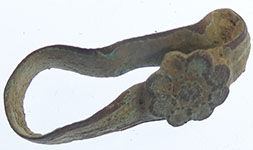 |
|||||||
| Georgian watch winders | Medieval mount | Georgian finger ring | |||||||
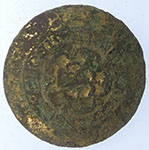 |
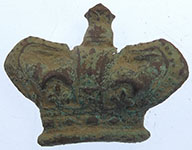 |
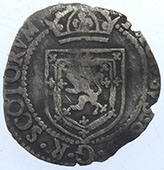 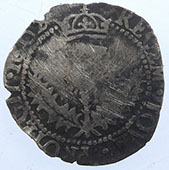 |
|||||||
| Unknown Army button | Crown badge | James VI of Scotland hammered silver Eighth Thistle Merk ( 20 pence) Obv IACOBUS 6 D.G.R.SCOTORUM - James VI by the grace of god king of the Scots Rev REGEM IOVA PROTEGIT 1602 - Jehovah protects the King 1602 |
|||||||
 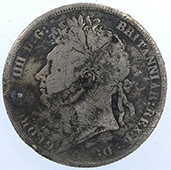 |
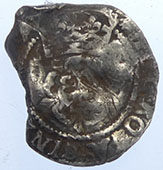 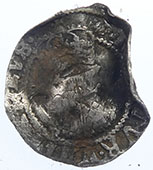 |
||||||||
| 1824 George IV milled silver shiling | 1603 James 1st hammered silver half groat | ||||||||
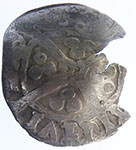 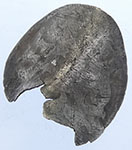 |
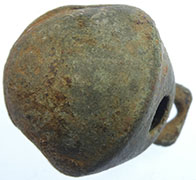 |
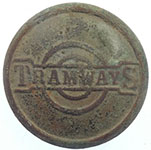 |
|||||||
1279 Edward 1st hammered silver penny Quatrefoil with pellet at centre of reverse cross Rev CIVI/TAS/EBO/RACI - York mint |
18thC crotal bell | Tramways button | |||||||
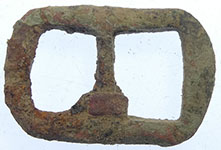 |
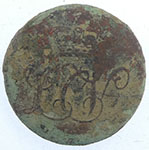 |
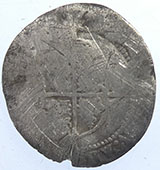 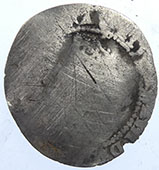 |
|||||||
| 1500-1700 buckle | Army volunteers button LCV |
16thC Elizabeth 1st hammered silver half groat | |||||||
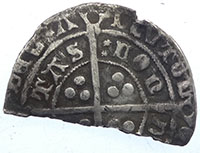 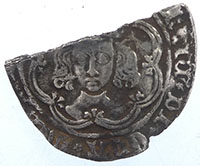 |
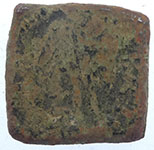 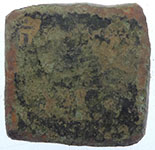 |
||||||||
1485-1509 Henry VII hammered silver groat -Type 3c Crozier ends on cross Obv DI+GRA*REX*** Rev TAS/*LON/D - London mint |
15thC Gold Angel coin weight | ||||||||
 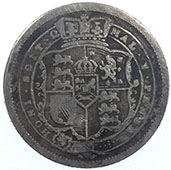 |
 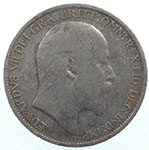 |
||||||||
| 1816 Georgian milled silver shilling | 1909 Edward VIII milled silver sixpence | ||||||||
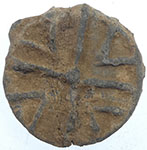 |
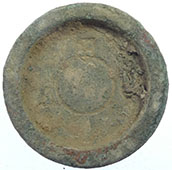 |
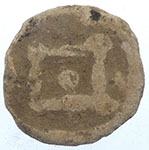 |
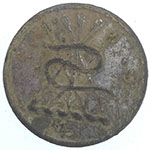 |
||||||
| 15thC lead token | 1835 Lincoln mint trade weight | Medieval lead token | 19thC livery button | ||||||
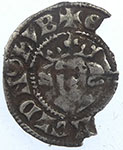 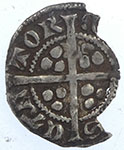 |
 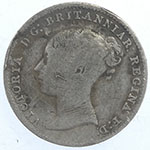 |
||||||||
1279 Edward III milled silver penny Obv +E*****ANGL DNS hYB Rev S/CAN/TOR- Canterbury mint |
1866 Victoria milled silver three pence | ||||||||
 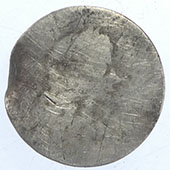 |
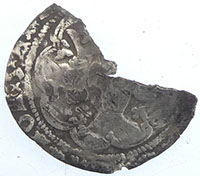 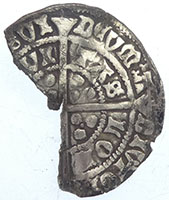 |
||||||||
| 1672 Charles II milled silver two pence | 1471-1483 Edward IV hammered silver groat - Rare Class XV- Satire stops - Trefoils on cusps Roses by neck Obv ****** ANGL xZxFRA Rev VI/TAS/LON - London mint |
||||||||
  |
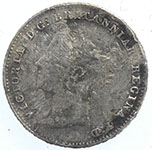  |
||||||||
1247 Henry III hammered silver voided longcross Rev OLE/VND - Moneyer Nicole of London mint |
1840 Victoria milled silver groat | ||||||||
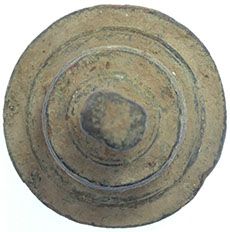 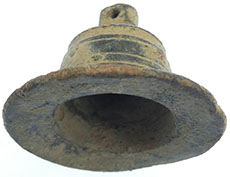 |
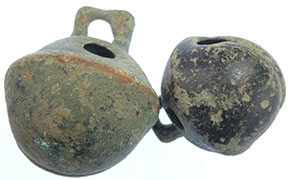 |
||||||||
| Georgian horse harness bell | 18thC crotal bells | ||||||||
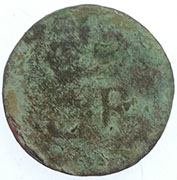 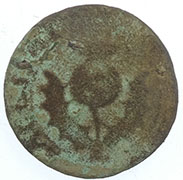 |
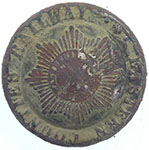 |
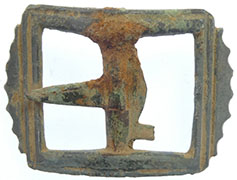 |
|||||||
| Fascinating hammered copper coin -with Scottish Thistle on rev. Charles I (1625-1649) copper turner or half groat (two pence). Obverse: Crowned "CR". Legend: "CAR D G SCOT ANG FRA ET HIB R" (Charles by the grace of God King of Scotland England France and Ireland). Reverse: Thistle: "NEMO ME INPVNE LACESSET" (No one shall hurt me with impunity). |
19thC Eastern counties Railways button | Georgian buckle | |||||||
|
|||||||||
| Huge 18thC toy cannon | |||||||||
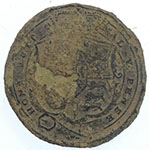  |
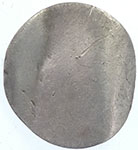 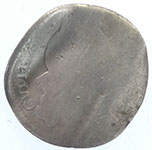 |
||||||||
| George III milled silver sixpence forgery | 17thC William III milled silver sixpence - love token | ||||||||
|
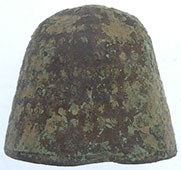 |
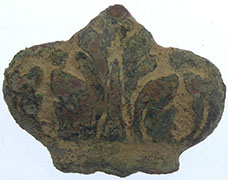 |
|||||||
| 17thC finger ring | 17thC thimble | Georgian mount | |||||||
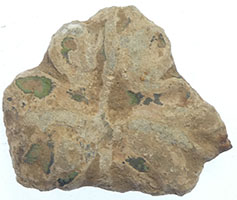 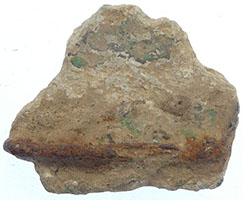 |
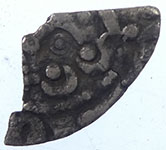 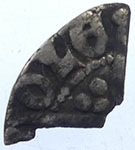 |
||||||||
| Medieval enamelled lead mount | 1247 Henry III hammered silver voided longcross farthing Rev OLE - Moneyer Nicole |
||||||||
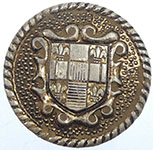 |
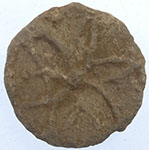 |
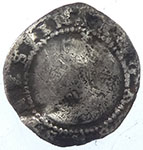 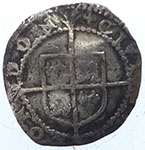 |
|||||||
| 20thC button | 17thC lead token | 1582 Elizabeth 1st hammered silver penny - sword mint mark | |||||||
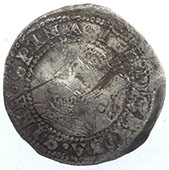 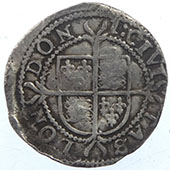 |
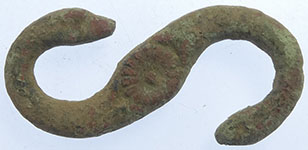 |
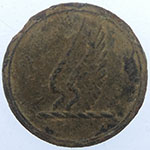 |
|||||||
| 1601-2 Elizabeth 1st hammered silver half groat- 1 mint mark | A cast copper alloy, S shaped belt fastener probably of post medieval date, AD 1550 - 1700. It is zoomorphic, being cast in the form of a snake with a head at each end. The mouths and eyes of the snake heads are clearly defined as are the scales of the body. In the centre of the fastener is a raised, circular collar flanked by leaves. A narrow ridge extends in both directions from this collar on each side of the fastener. | 19thC livery button | |||||||
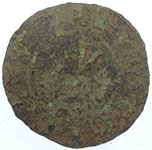 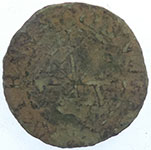 |
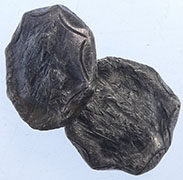 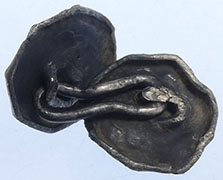 |
||||||||
| 1652 John Vanderwall of Harwich Essex hammered copper trade farthing | 18thC silver cuff link | ||||||||
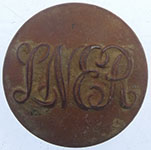 |
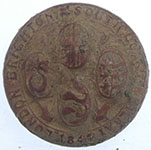 |
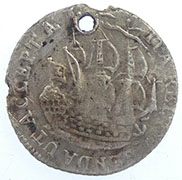 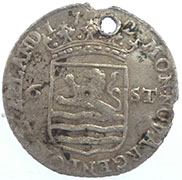 |
|||||||
| 20thC London North Eastern Railways button | 1840 Brighton and South Co Railways line - London button | ObverseCrowned arms of Zeeland dividing value, date above. Script: Latin Lettering: Unabridged legend: Moneta nova argentea ordinum Zelandiae Translation: New silver coin of the province of Zeeland ReverseThree mast ship sailing to right. Script: Latin Lettering: ITA RELINQUENDA UT ACCEPTA · ♜ Translation: It should be left as it's been received Edge |
|||||||
 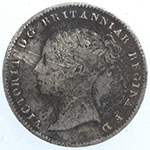 |
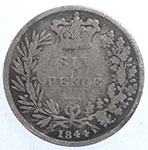 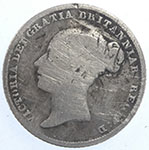 |
||||||||
| 1859 Victoria milled silver three pence | 1844 Victoria milled silver sixpence | ||||||||
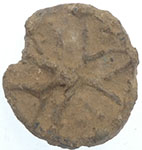 |
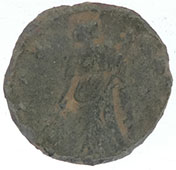 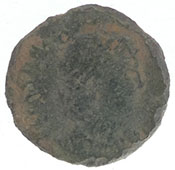 |
||||||||
| 17thC lead token | 4thC Roman bronze coin - sent for ID Interesting that this is probably a Roman silver as you can see silver on the edges in the pictures. Are you sure this isn’t silver?– it’s too tiny and lacks the “S-C” Imperial bronze would have carried– if it’s definitely base metal, maybe it’s a so-called “Limes Falsa” copy of a denarius – they were generally cast in molds made by pressing genuine coins into clay, so they tend to be accurate in detail. It also might be a semis or qudrans of a type with which I am unfamiliar. It looks as if, with a little careful cleaning, the obverse legend (or parts of it) might be made legible. Send it again if it gets cleaned and I’ll have another stab at it 1.04g, 14.11mm |
||||||||
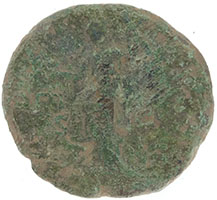 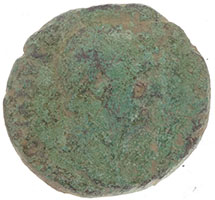 |
|
||||||||
2nd Roman bronze coin - sent for ID Antoninus Pius, (138-161 AD.) Brass sestertius - Female deity or allegorical personification standing facing, head left, holding uncertain objects – and again, too little legend and detail to be sure, but it m,ight be a globe and scepter that she’s holding 13.3g, 26.31mm |
Georgian fob seal 'Alfred' |
||||||||
 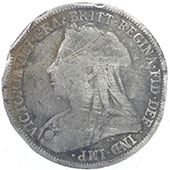 |
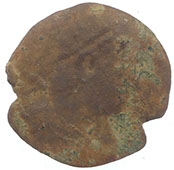 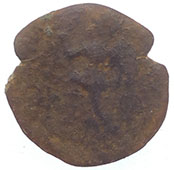 |
||||||||
| 1896 Victoria milled silver shilling | Weird Roman copper coin sent for ID Time of Constantius II (337-361 AD – Probably Constantius II, although a small number of this same type were briefly struck for Constans, Constantius Gallus, Caesar, and Julian II, as Caesar – It looks more like Constantius II – no legend showing to prove it, however. 1.3g, 16.34mm |
||||||||
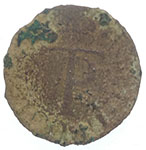 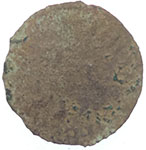 |
 |
 |
|||||||
| 17thC Thoman Peeke of Colchester Essex hammered copper trade farthing | Unknown military button ? PAB 1 |
1500-1650 buckle | |||||||
 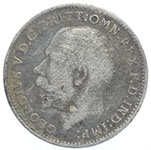 |
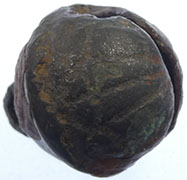 |
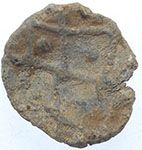 |
|||||||
| 1920 George V milled silver three pence | 18thC crotal bell | 15thC lead token | |||||||
Huge toy pistol |
|||||||||
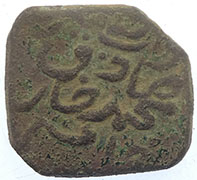  |
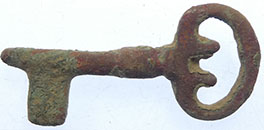 |
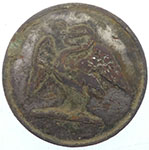 |
|||||||
Unknown foreign coin - researching it Similar coin ID INDIA BAHAWALPUR NAWAB SADIQ V COPPER COIN 1327
|
15thC casket key | 19thC livery button | |||||||
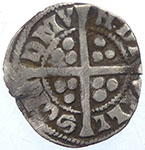 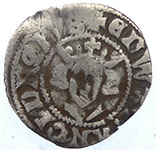 |
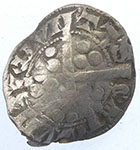 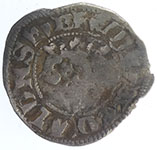 |
||||||||
1272 Edward 1st hammered silver penny - Class10cf Obv +EDWAR ANGL DNS hYB Rev VILL/SCIE/DMV/NDI - Bury St Edmunds mint |
1272 Edward 1st hammered silver penny Obv +EDW hYB +EDW'I DNS hYB- Double struck legend Rev CIVI/TAS/**** |
||||||||
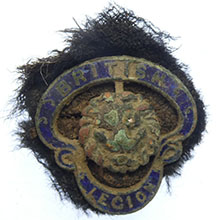 |
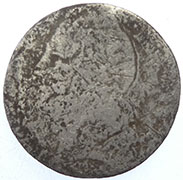 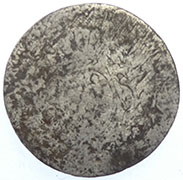 |
||||||||
| Neat British Legion badge still attached to cloth | Continental milled silver coin - researching it- French ? | ||||||||
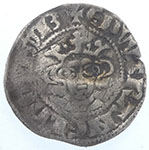 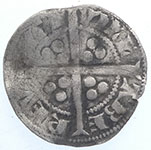 |
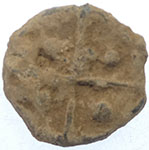 |
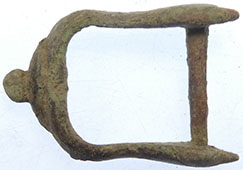 |
|||||||
1296-1318 Edward 1st hammered silkver penny Pellet on breast Class2c Obv +EDWAR ANGL DNS hYB Rev VILL/ABE/REV/VICI - Berwick mint |
15thC lead token | 1500-1700 buckle | |||||||
BC Republican roman silver coin - helmeted bust facing left- needs 'cooking to remove crust |
|||||||||
20thC toy pistol |
|||||||||
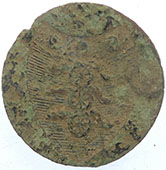 |
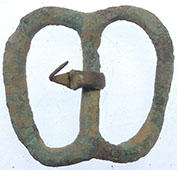 |
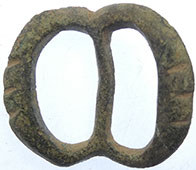 |
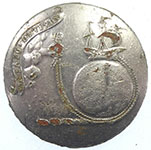 |
||||||
| 18thC Royal artillery button | 1500-1700 buckle | 1500-1700 buckle | 19thC livery button | ||||||
|
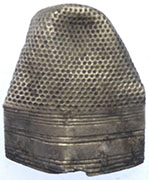 |
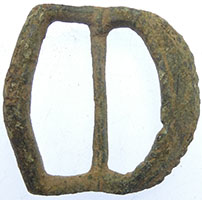 |
|||||||
| Victorian silver finger ring | Victorian silver thimble | 1500-1700 buckle | |||||||
|
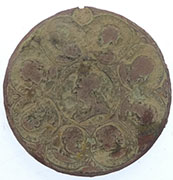 |
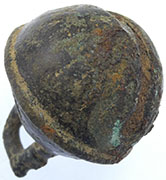 |
|||||||
| Miniture copper hammer | Old bust Victoria pendant | 18thC crotal bell | |||||||
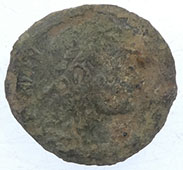 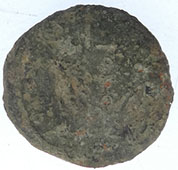 |
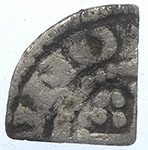 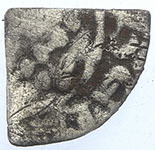 |
||||||||
4thC Roman bronze sent for ID Constantinian era - probably Constantine I, (306-377 AD), portrait looks like him, but legend is too unclear to be certain. |
1216 Henry III hammered silver short cross farthing Rev LND - London mint |
||||||||
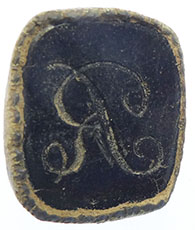 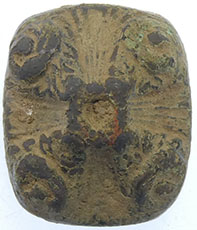 |
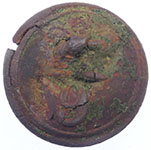 |
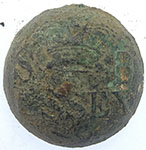 |
|||||||
| Georgian fob seal - Letter R | 19thC 9th Regiment of foot button |
The South Essex Militia were formed in 1803 and disembodied in 1805. | |||||||
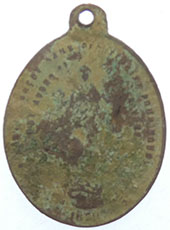  |
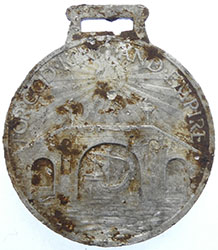 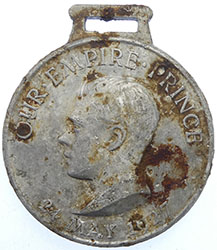 |
||||||||
| 1820 Religious Medallion | Prince Edward - 24th May 1927 medallion 'Our Empire Prince 'For god king and empire' |
||||||||
1950 Ariel motorcycle enamelled tank badge |
|||||||||
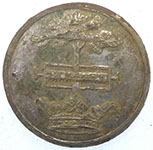 |
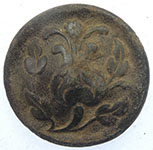 |
  |
|||||||
| 19thC livery button | Georgian button | 1815 Russian lead bale seal | |||||||
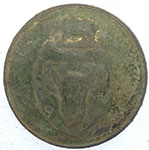 |
 |
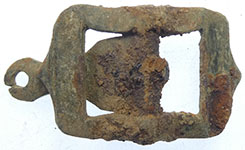 |
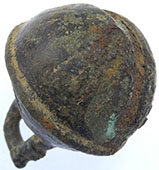 |
||||||
| 19thC livery button | 19thC livery button | Georgian spur buckle | 18thC crotal bell | ||||||
 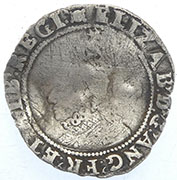 |
 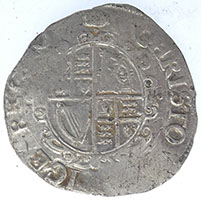 |
||||||||
| 1594 Elizabeth 1st hammered silver sixpence - Woolpack mint mark | 1638-9 Charles 1st hammered silver shilling | ||||||||
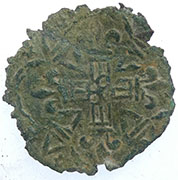 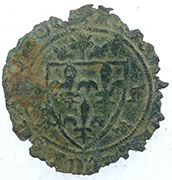 |
|||||||||
| 1340 Jetton - French 'shield of France' type - 3 Lis in a shield |
|
||||||||
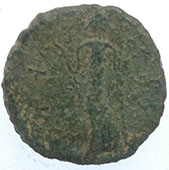 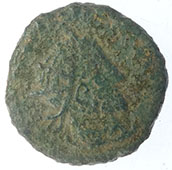 |
 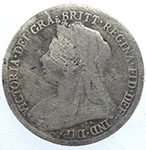 |
||||||||
4thC Roman bronze sent for ID 2.14g, 15.55mm this is a contemporary copy of a mid-late 3rd century billon antoninianus. These unofficial pieces were very common in Britain and Gaul in the mid-late 3rd century and circulated alongside the few official pieces still in circulation at that point. |
1899 Victoria milled silver sixpence | ||||||||
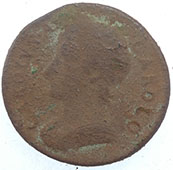 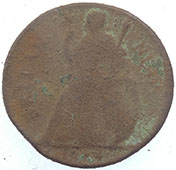 |
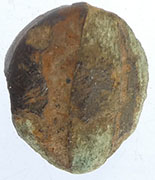 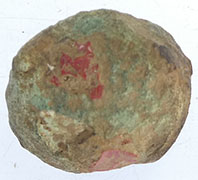 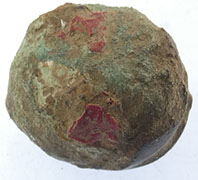 |
||||||||
| 1674 Charles II milled copper farthing | Medieval enamelled mount | ||||||||
Medieval lead vessica seal matrix S'DR' W D R I N D |
|||||||||
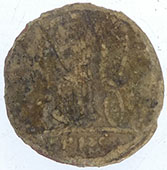 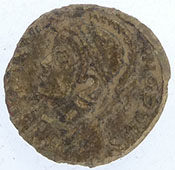 |
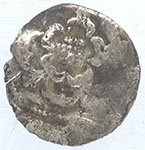 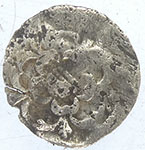 |
||||||||
4thC Roman bronze coin - sent for ID This is a billon centenionalis issued by Constantine I to commemorate the beginning of the new Roman capital at Constantinople - it was minted as a part of the same huge emission which also features the very common "two standards flanked by soldiers" (GLORIA EXERCITVS) reverse. |
1625 Charles 1st hammered silver half penny - Rose both sides no legend | ||||||||
 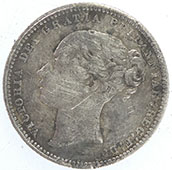 |
 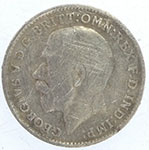 |
||||||||
| 1875 Victoria milled silver shilling | 1916 George V milled silver three pence | ||||||||
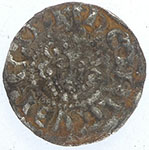 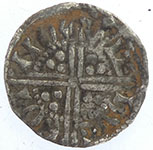 |
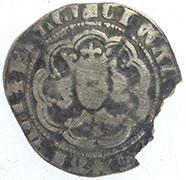 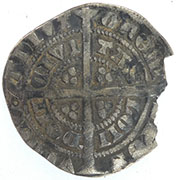 |
||||||||
1247 Henry III hammered silver voided long cross - Class 3c Obv hENRICVS REX Rev EON/NOR/WIZ/hVG- Moneyer Hvge of Norwich mint |
1351-3 Edward III hammered silver half goat - Pre treaty Series C - i.m. Cross 1 - No trefoils over crown - closed C & E's Obv + EDWAR *****REX ANGLI Z FRANC Rev CIVI/TAS/LON/DON - London mint |
||||||||
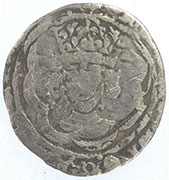 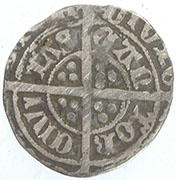 |
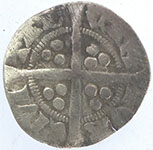 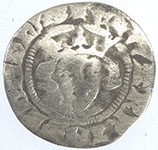 |
||||||||
1485-1509 Henry VII hammered silver half groat - double stuck crown Rev CIVI/TAS/CAN/TOR- Canterbury mint |
1327 Edward III hammered silver penny Obv + EDWAR R ANGL DNS hYB Rev CIVI/TAS/CAN/TOR- Canterbury mint |
||||||||
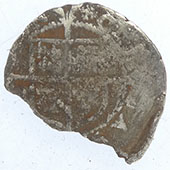 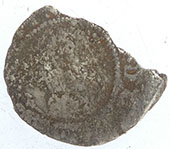 |
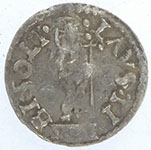 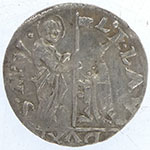 |
||||||||
| 16thC Elizabeth 1st hammered silver half groat | 1501-1521 Leonardo Lauredan, Doge Rev: LAVS TIBI SOLI (Thee Alone be Praised). Haloed figure of Christ holding a cross. Obv: LE LAV DVX S M V (Leonardo Lauredan, Doge. St Mark of Venice.) Doge kneeling before Saint Mark. |
||||||||
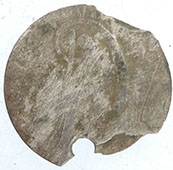 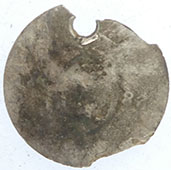 |
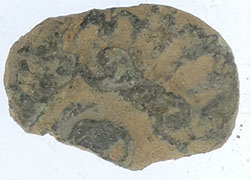 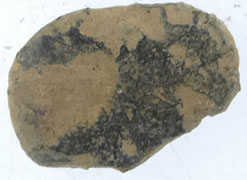 |
||||||||
| 1782 Denmark 2 skilling milled silver billion coin | Celtic bronze unit ? | ||||||||
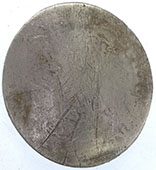 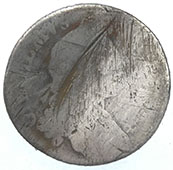 |
 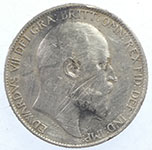 |
||||||||
| 17thC William III milled silver shilling | 1910 Edward VII milled silver sixpence | ||||||||
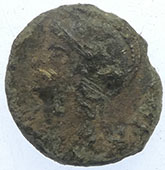 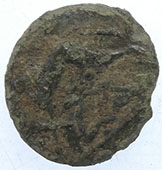 |
 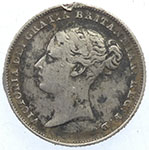 |
||||||||
4thC Roman bronze coin sent for ID Not easy to "see", but it's the she-wolf standing left, looking back at the twins, Romulus and Remus as babies, suckling. |
1841 Victoria milled sixpence | ||||||||
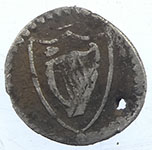 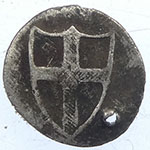 |
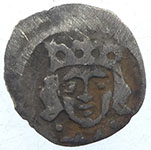 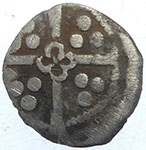 |
||||||||
Tiny 1649 Commonwealth hammered silver half penny 0.23g, 9.22mm |
Irish 1461 - 1470 Edward IV hammered silver penny Pellets by neck Quadrefoil with pellet at centre of rev cross |
||||||||
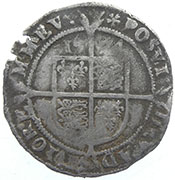 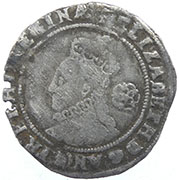 |
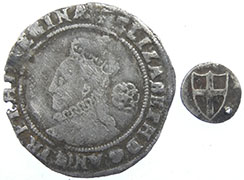 |
||||||||
| 1573- 8 Elizabeth 1st hammered silver sixpence - Eglantine mint mark | Elizabeth 1st sixpence V halfpenny size comparion 0.23g, 9.22mm |
||||||||
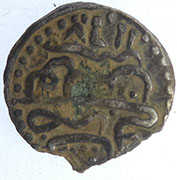 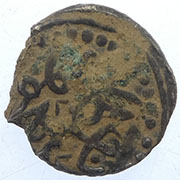 |
 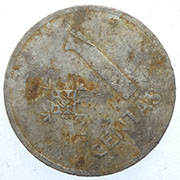 |
||||||||
Foreign silver coin - researching it 1 Kharub of Mahmud I from Tunisia. 1167 (Arabic calendar - ~1754 AD). https://en.numista.com/catalogue/pieces113016.html
|
ObverseThe arms of Lithuania above the date Script: Latin Lettering: Translation: Engraver: Petras Garška ReverseSquare ornament with triangle tulips in each corner and a symbol of the columns of Gediminas in the center Script: Latin Lettering: |
||||||||
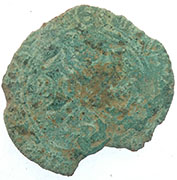 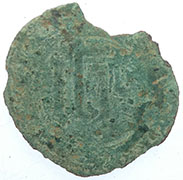 |
  |
||||||||
Louis XII 1479-1515 French Jetton IHS type |
1858 Victoria milled silver sixpence | ||||||||
|
|||||||||
1928 Glasgow mint mark - silver brooch with white stones - date letter F, thistle mark Make WHC |
|||||||||
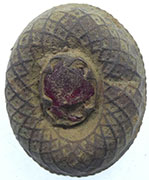 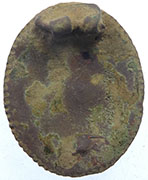 |
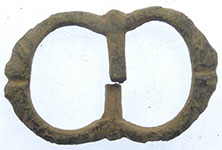 |
 |
|||||||
| Georgian brooch with red stone | 1500-1700 buckle | 15thC casket key | |||||||
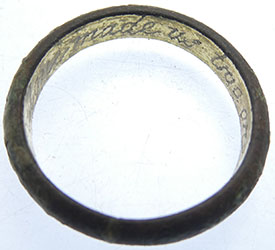  |
|||||||||
First 17/18thC gold plated posy ring I have seen 'God alone made us troo one' |
|||||||||
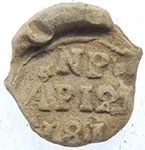 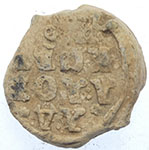 |
 |
||||||||
| Post medieval lead bale seal | Georgian silver buckle fragment | ||||||||
5thC Roman gold coin - 4.36g, 21.03m - sent for ID Constantine looking bust facing right I’m going to need a while on this one. It does look like a solidus. Whether it technically falls within the “Roman” series or the “Byzantine” series I can’t tell at this point. Mark Valentinian III, 425-455 AD.
|
|||||||||
Gold spoil probably 6th C - reported as treasure to museum 13.7g, 16.09 mm L x 1.39 mm T |
|||||||||
Really thick 4thC Roman bronze sent for ID - Mark sent me lots of examples of Celtic bronzes below.Lots of Lions on them. - not a really common European type, European lions having been hunted to extinction in the 1st millennium BC. 8.6g, 21.4mm, 4.33mm thick
These are found in Kent and environs:
CELTIC, Britain. Cantiaci. Circa 50-30 BC. AE Unit (1.43 gm). Canterbury Lion Type.
GAULE CELTIQUE, Carnutes ou Aulerci Eburovices, AE bronze, vers 40-30 av. J.-C. Classe IX au lion. D/ B. casqué à g., le cou orné d''un torque. Devant, [PIXTILOS]. Derrière, une branche. R/ Lion courant à g., la queue enroulée au-dessus du dos entre deux annelets centrés. En dessous, un oiseau (?). DT 2473; Scheers, RN (1979), 20; B.N. 7105. 2,24g Rare Traces de corrosion sur le bord. Patine verte.
GAULE BELGIQUE, Bellovaci, AE bronze. D/ T. barbue, stylisée à d., la chevelure formée de cinq grosses mèches. Devant, globules. R/ Lion à g. Les pattes antérieures manquent. Scheers, Traité, 471; Allen, BMC, 32; Scheers, Seine Mar., 646; L.T. 8577; DT 231. 2,96g Belle patine vert foncé. |
|||||||||
Cooked silver pictures Roman silver coin sent for ID above is a denarius of Trajan, 96-117 AD. Obv: IMP TRAIANO AVG GER DAC P M TR P COS V P P laureate bust of Trajan right, drapery on left shoulder Mark |
|||||||||
 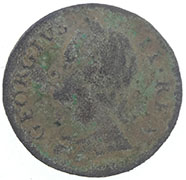 |
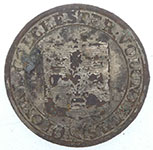 |
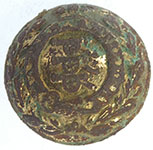 |
|||||||
| Nice condition 1749 George 1st milled copper farthing | "... Corps of Loyal Colchester Volunteers," raised in consequence of the fears of invasion by Napoleon in July, 1803. The total amount raised by this subscription was 1,392 ". A rare button indeed | Royal Artillery 1840-1855 Worn during the interim period of the 'scroll less' version |
|||||||
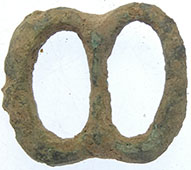 |
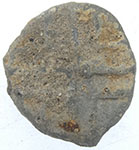 |
 |
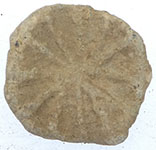 |
||||||
| 1500-1650 buckle | 15thC lead token | 15thC lead token | 15thC lead token | ||||||
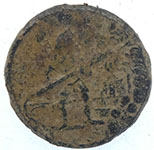 |
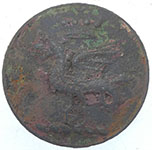 |
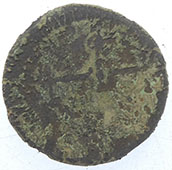 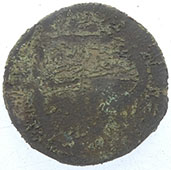 |
|||||||
| Georgian button | 19thC livery button | Unknown coin weight | |||||||
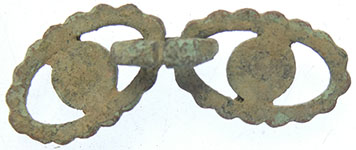 |
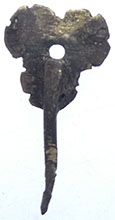 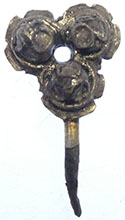 |
||||||||
| Georgian cuff links | 16thC Tudor gilded silver hook fastener- reported as treasure | ||||||||
This is an incomplete socketed arrowhead of Bronze Age date (c.2550-800 BC). 16.74g |
|||||||||
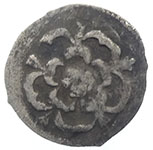 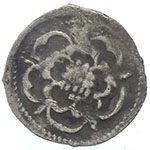 |
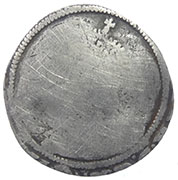 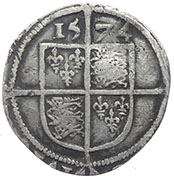 |
||||||||
| 1625 Charles 1st hammered silver half penny - rose both sides no legend | 1574 Elizabeth 1st hammered silver sixpence | ||||||||
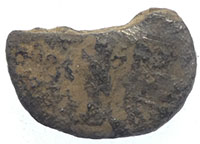  |
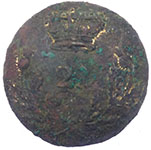 |
 |
|||||||
| 2nd C Roman silver coin | 21st Regt of Foot
Description: Crowned 21 with thistle spray below. Category: Regular Army; Type of button: Slightly convex 25mm ; Metal: Pewter; Backmark: None; Date: c1800-1830 |
1500-1700 mount | |||||||
  |
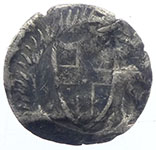 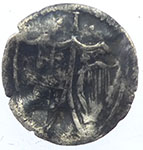 |
||||||||
Taco'd , 1377-1399 Richard II hammered silver half penny Obv +RICARD REX ANGL' |
1649 Commonwealth hammered silver penny | ||||||||
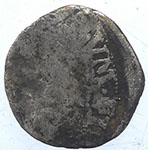 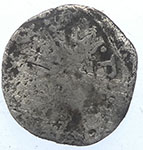 |
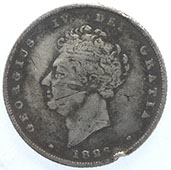 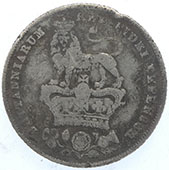 |
||||||||
| Unknown hammered silver coin | 1826 George IV milled silver shilling | ||||||||
Ancient gold strip - reported to museum as treasure 3.01g, 62.4mm L x 4.6mm W x 0.85mm T |
|||||||||
Large 13thC heraldic enamelled shield pendant - chequy type -researching owner Azure and Gules colours - some Or Previous PAS record Unique ID: IHS-1CD2A4 Arms: Gatton, de or Warenne, de There appear to be microscopic traces of dark blue in some surface pits, suggesting that the original tinctures were "chequy a metal and azure". Depending on whether the metal was gold or silver, the arms represented may have been those of Gatton or Warenne. Both Hamo de Gatton senior, and his supposed son, Hamo junior, used chequy argent and azure as their arms. Hamo senior, of Gatton in Surrey, served as sheriff of Kent in 1286; he was summoned to serve against the Welsh in 1277 and 1282, dying in 1292. Hamo junior was summoned to serve against the Scots in 1298, and died two years later, leaving a minor, Edmund, as his heir. The second, and perhaps most likely, possibility for the owners of these arms are the Warenne earls of Surrey who used chequy or and azure. The Warennes were arguably the wealthiest landowners in England in the twelfth and thirteenth centuries; their arms are thought to be some of the oldest known. The family's stature and wealth derived, to some degree, from their royal ancestry via one of Geoffrey of Anjou's illegitimate sons; Geoffrey was the father of Henry II, the founder of the Plantagenet dynasty. The Warennes' royal links were reinforced by the marriage of John de Warenne with Alice de Luisgnan, Henry III's half sister. John de Warenne generally served Edward I well: he was summoned to serve against the Welsh in 1277 and 1294, and against the Scots in 1291, 1297 and 1300, becoming 'Keeper of Scotland' in 1291. Warenne died in 1304, leaving a grandson, also John, as his heir. |
|||||||||
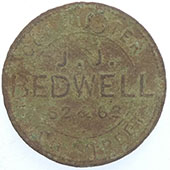 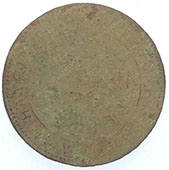 |
 |
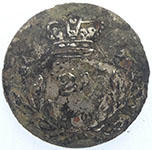 |
|||||||
1880-1890 John Robert Bedwell token Colchster Essex
ObverseLegend on five lines, the top and bottom curved. Lettering: ReverseLegend on five lines, the top three and bottom one curved. Lettering: |
Georgian watch winder with glass stone | 21st Regt of Foot
Description: Crowned 21 with thistle spray below. Category: Regular Army; Type of button: Slightly convex 25mm ; Backmark: None; Date: c1800-1830 |
|||||||
 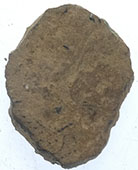 |
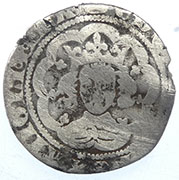 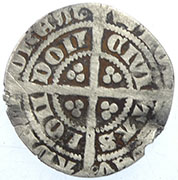 |
||||||||
Weird bronze coin ? This is an VRBS ROMA - with helmeted Roma facing left on the obverse and the mythic Shewolf standing left on the reverse suckling Romulus and Remus. These belong to the period 330-337 or so. |
1356 -1361 Edward III hammered silver half groat - 4th coinage Pre treaty period - Series G (b) annulet stops Obv +EDWA***REX ANGLI o Z o FRANC Rev CIVI/TAS/LON/DON - London mint |
||||||||
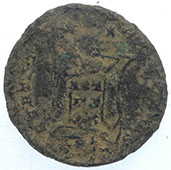 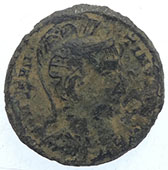 |
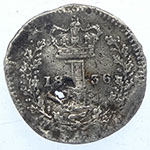 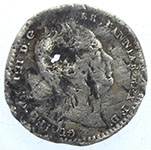 |
||||||||
4thC Roman bronze coin - sent for ID
|
1836 William IV milled silver penny - Maundy issue | ||||||||
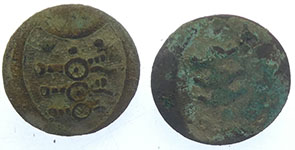 |
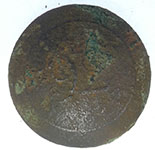 |
||||||||
| 19thC Royal Artillery buttons | THE 92nd REGIMENT OF FOOT
Description: 92 within plain inner circle. Category: Regular Army; Type of button: Convex 15mm ; Date: c1820-1840 |
||||||||
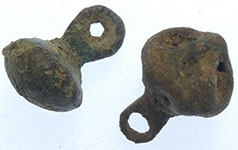 |
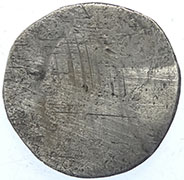 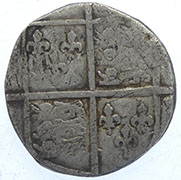 |
||||||||
| 16thC Tudor buttons | 16th C Elizabeth 1st hammered silver sixpence | ||||||||
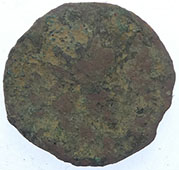 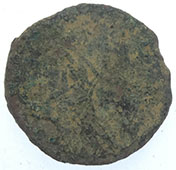 |
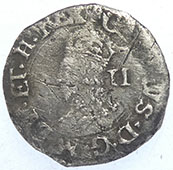  |
||||||||
| Mid 4thC Roman barbarous radiate coin | 1625 Cahrles 1st hammered silver half groat | ||||||||
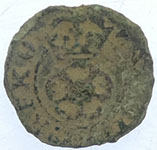 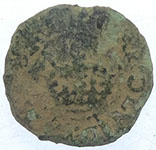 |
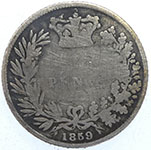 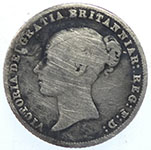 |
||||||||
| 1634 Charles 1st hammered copper rose farthing | 1859 Victoria milled silver sixpence | ||||||||
 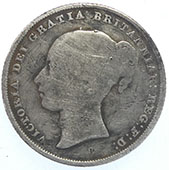 |
 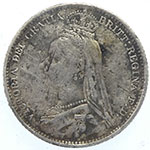 |
||||||||
| 1839 Victoria milled silver shilling | 1889 Victoria milled silver sixpence | ||||||||
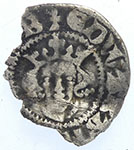 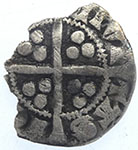 |
 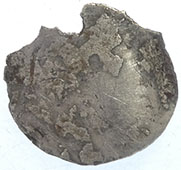 |
||||||||
1279 Edward 1st hammered silver penny Obv +EDWAR AN**** |
1567 Elizabeth 1st hammered silver half groat | ||||||||
 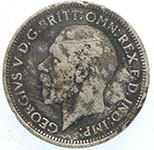 |
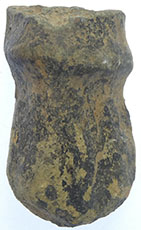 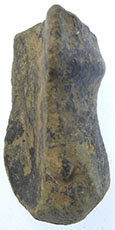 |
||||||||
| 1936 George V milled silver sixpence | Medieval bronze pot foot | ||||||||
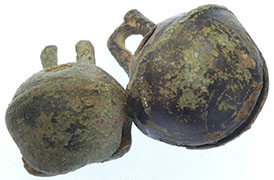 |
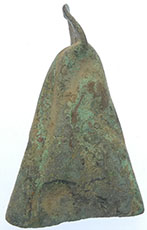 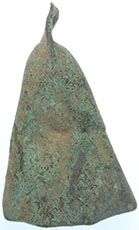 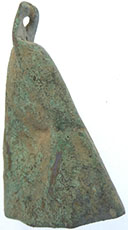 |
||||||||
| 18thC crotal bells | Georgian candle snuffer | ||||||||
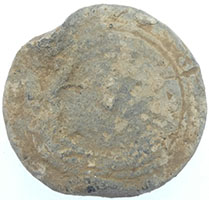 |
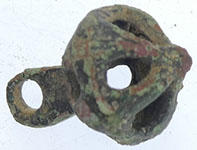 |
|
|||||||
| Post medieval lead trade weight | 16thC Tudor button | Medieval strap end | |||||||
 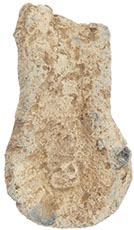 |
|||||||||
Medieval lead pilgrims ampullae Many ampullae used the pre-eminent pilgrimage symbol of the scallop shell, as with a Norfolk example . Although most closely linked to the shrine of St. James at Santiago de Compostela, the scallop was a symbol of renewal and regeneration before Christianity. Beginning with representations of Venus, it became commonplace in Roman architecture and on sarcophagi |
|||||||||
Medieval lead trade weight |
|||||||||
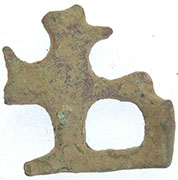 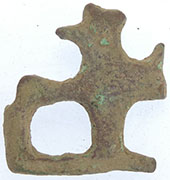 |
  |
||||||||
| C10thC Saxon stirup mount | 17thC Joseph Gleson of Dedham Essex hammered copper trade farthing | ||||||||
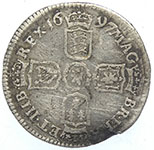 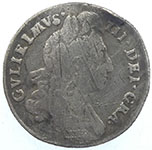 |
 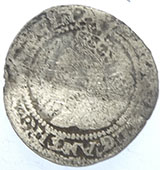 |
||||||||
| 1697 William III milled silver sixpence | 1572 Elizabeth 1st hammered silver half groat | ||||||||
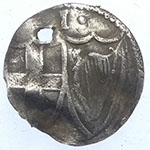 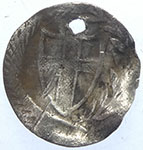 |
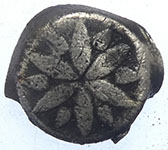 |
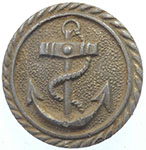 |
|||||||
| 1649 Commonwealth hammered silver penny | 18thC silver button | 20thC Alloy Merchant Navy button | |||||||
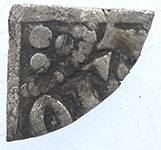 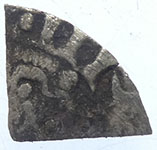 |
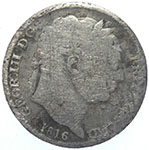  |
||||||||
| 1247 Henry III hammered silver voided long cross farthing | 1816 George III milled silver sixpence | ||||||||
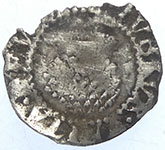 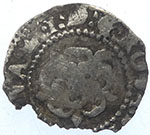 |
 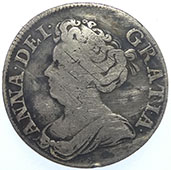 |
||||||||
| 1603 James 1st hammered silver penny | 1711 Anne milled silver shilling (12 pence) | ||||||||
 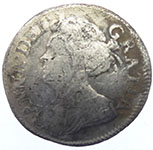 |
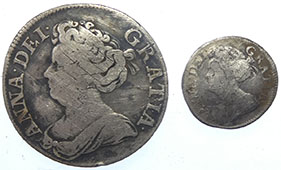 |
||||||||
| 1710 Anne milled silver maundy two pennce | Anne shilling v 2 pence comparison | ||||||||
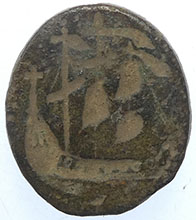 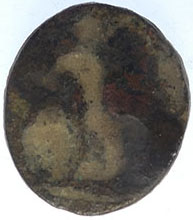 |
  |
||||||||
| Double sided Georgian fob seal | 1216 Henry III hammered silver short cross half penny Rev .ON.CAN - Canterbury mint |
||||||||
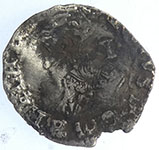 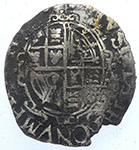 |
 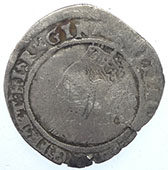 |
||||||||
| 1625 Charles 1st hammered silver penny | 1570 Elizabeth 1st hammered silver three pence | ||||||||
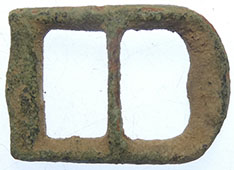 |
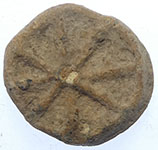 |
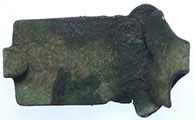 |
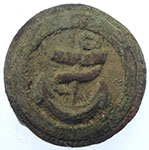 |
||||||
| Circa 1575- 1700 | 15thC lead token | 18thC clog fastener | 1900 Generic merchant navy button | ||||||
 |
 |
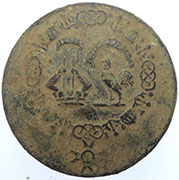 |
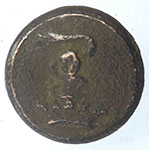 |
||||||
| Georgian pendant | 1500-1700 mount | 19thC livery button | 19thC livery button | ||||||
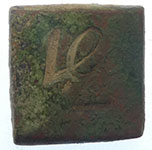 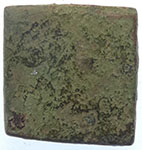 |
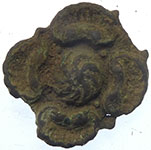 |
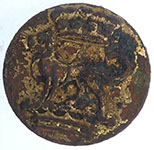 |
|||||||
| 18thC apothecary weight | gEORGIAN MOUNT | 19thC livery button | |||||||
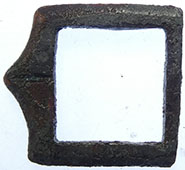 |
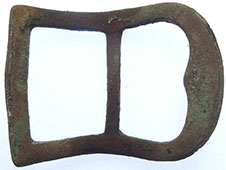 |
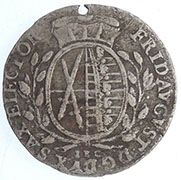 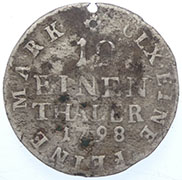 |
|||||||
| 1500-1700 Buckle | Circa 1575- 1700 | German States Saxon 1798 1/12 Thaler Obverse: Crowned large oval arms Obverse Legend: FRID: AVGVST: D: G: DUX SAX: ELECTOR Reverse: Value above date Reverse Legend: CLX • EINE FEINE MARK • |
|||||||
16thC Jewelry item - gilded silver with sapphire stone setting - reported as treasure 0.75g, 13.51 mm dia |
|||||||||
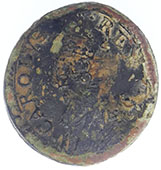 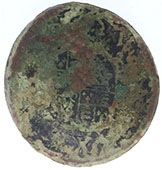 |
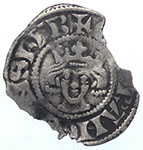 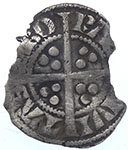 |
||||||||
1625 Charles 1st oval gold coin weight - Unite 20 shillings Obv .CAROLVS +REX Crowned draped bust in ruff left ev Oval crowned shield of arms,xx below |
1327 Edward III hammered silver penny Obv + E****R'ANG*** NS hYB Rev BO/RA***/*IVI/TAS - York mint
|
||||||||
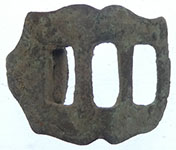 |
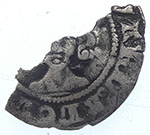 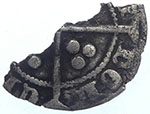 |
||||||||
| 18th C clog fastener | 1279 Edward 1st hammered silver penny Obv **ARDoANGL***** Rev /DON/CI** - London mint |
||||||||
 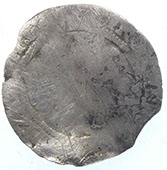 |
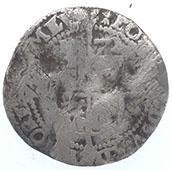 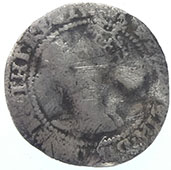 |
||||||||
| 1567 Elizabeth 1st hammered silver three pence | 1572 Elizabeth 1st hammered silver three pence | ||||||||
  |
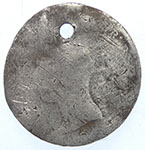  |
||||||||
1279 Edward 1st hammered silver penny Obv +EDWA** |
19thC Victoria milled miller silver three pence | ||||||||
  |
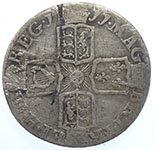 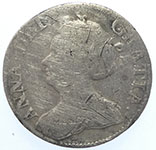 |
||||||||
| 17thC hammered copper trade farthing | 1711 Anne milled silver sixpence | ||||||||
Roman silver coin - sent for ID - 'cooking' to remove crust 96-117 AD. This is obviously Trajan and very likely a denarius or Provincial drachma It’s not easy to see, but this is another example of the so-called “Capitoline wolf” – the ancient bronze statue of the she-wolf. Self-explanatory to the typical Roman, it didn’t need the pair of suckling twins which added in the renaissance with which it is displayed today (in the Vatican? – not sure where, but it’s a famous museum). |
|||||||||
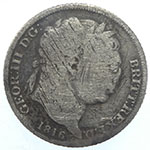 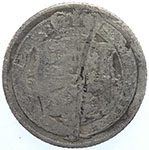 |
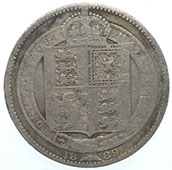 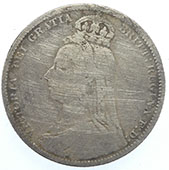 |
||||||||
| 1816 George III milled silver sixpence | 1889 Victoria milled silver shilling | ||||||||
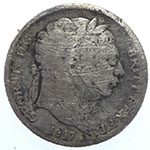  |
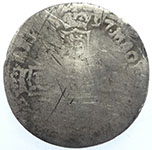  |
||||||||
| 1817 George III milled silver sixpence | 1697 William III milled silver sixepnce | ||||||||
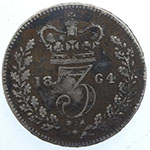 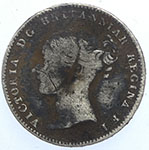 |
 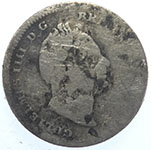 |
||||||||
| 1864 Victoria milled silver three pence | 1837 William IV milled silver four pence | ||||||||
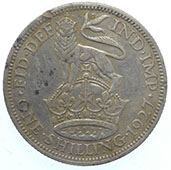 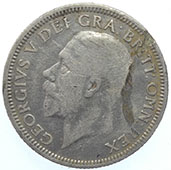 |
|
||||||||
| 1927 George V milled silver shilling | 20thC butterfly brooch | ||||||||
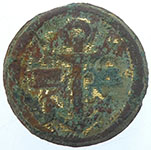 |
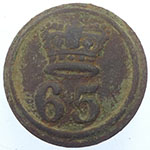 |
 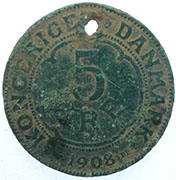 |
|||||||
Researching it as it has XI to the side of anchor RN Capt / Commander - 1787 |
65th Regiment of foot button 2nd Yorkshire North Riding 1782-1881. |
DENMARK, 5 Ore, 1908, Copenhagen | |||||||
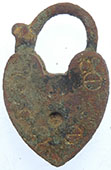 |
 |
 |
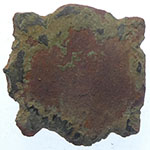 |
||||||
| Victorian jewelry pad lock | 1500-1700 mount | 1500-1700 mount | 1500-1700 mount | ||||||
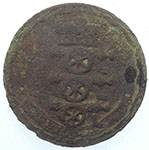 |
 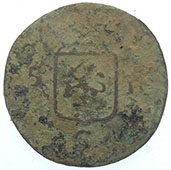 |
||||||||
| Post 1831 version - three cannons pointing left with the Royal crown over- The design was changed in 1840 with the addition of the 'Ubique' scroll below the lower cannon | NETHERLANDS EAST INDIES, Duit, 1808, Dordrecht, |
||||||||
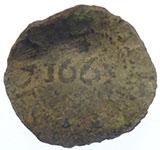 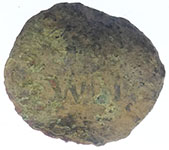 |
Possible Cumberland token but Rev does not have Victoria bust |
||||||||
| 1665 William Ferris of Colchester hammered copper trade farthing | Victorian "Cumberland Jack" Token 1837
Reverse |
||||||||
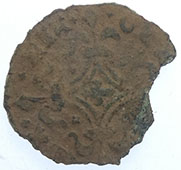  |
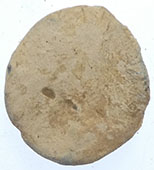 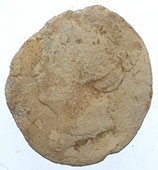 |
||||||||
| 1608 AD Hans Schultes III 'Turbanded bust' German Jetton. Male bust right wearing a turban. | 1704 Queen Anne intaglio | ||||||||
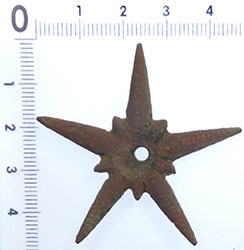 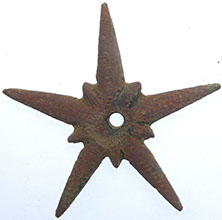 |
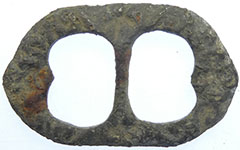 |
 |
|||||||
| Late 14th-15th century - Large copper alloy medieval spur rowel | 1500-1650 buckle | Georgian adverrtising watch winder | |||||||
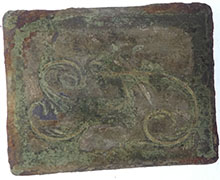 |
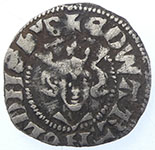 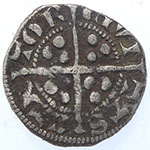 |
||||||||
| Georgian name plate | 1279 Edward 1st hammered silver penny Obv +EDWAR ANGL DNS hYB Rev CIVI/TAS/CAN/TOR - Canterbury mint |
||||||||
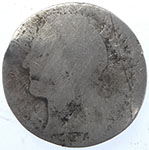 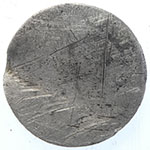 |
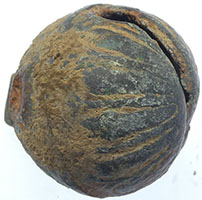 |
||||||||
| 1727-1760 George II milled silver sixpence | Large 18thC crotal bell | ||||||||
 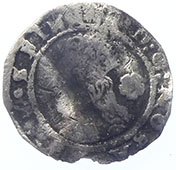 |
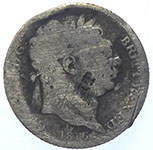 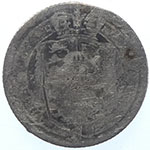 |
||||||||
| 1575 Elizabeth 1st hammered silver half groat | 1816 George III milled silver sixpence | ||||||||
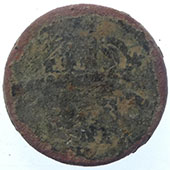 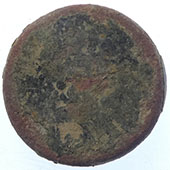 |
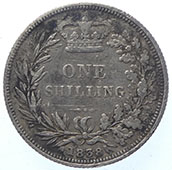  |
||||||||
18thC Gold Guinea coin weight Obv Crown GVINEA |
1838 Victoria milled silver shilling | ||||||||
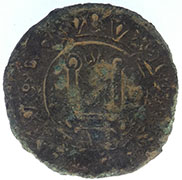 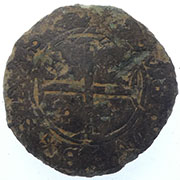 |
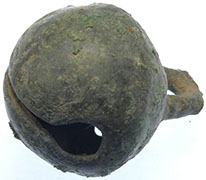 |
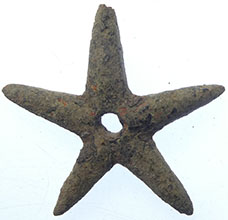 |
|||||||
| 15thC French Chatel Tournois jetton | 18thC crotal bell | A copper alloy medieval to post medieval rowel spur, dating to the c.14th- 17th century. The rowel is a five pointed star shape, with each point oval in cross section. In between each point is a triangular groove. In the centre of the rowel is a circular hole for attachment. | |||||||
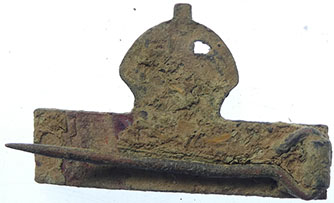 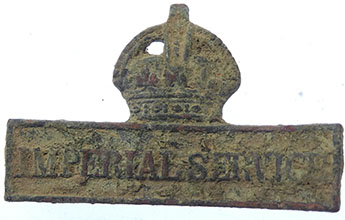 |
|||||||||
Imperial Service The Territorial Force Imperial Service Badge was a short-lived decoration of the United Kingdom awarded to those members of the Territorial Force (TF) who were prepared to serve outside the United Kingdom in defence of the Empire, in the event of national emergency. The conditions of enlistment for the TF laid down at their creation in 1908 did not allow for soldiers to be sent for service overseas against their will, as the TF was intended for home defence. However, any man could volunteer for the Imperial Service Section and serve abroad in times of war, which entitled him to wear this badge.[1] The badge was worn on the right breast of the uniform. It was not compulsory for the badge to be worn. |
|||||||||
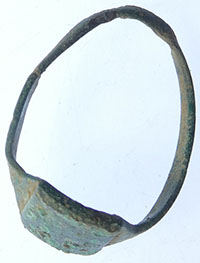 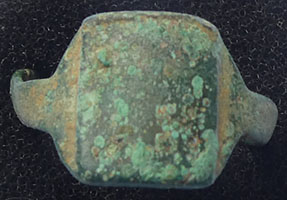 |
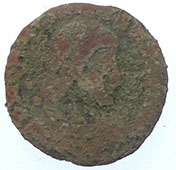 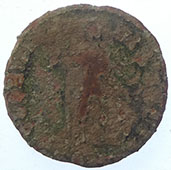 |
||||||||
| Victoria copper signet ring | Mid 4thC Roman Constantine copper coin | ||||||||
 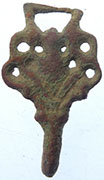 |
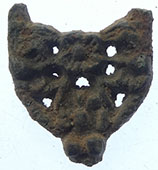 |
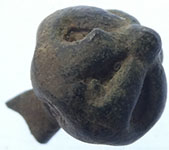 |
|||||||
| 16th Tudor clothing fastener | 16th Tudor clothing fastener | 16th Tudor button | button|||||||
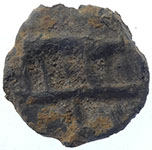 |
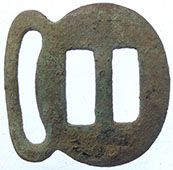 |
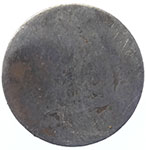 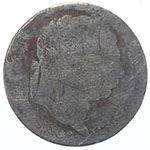 |
|||||||
| 17thC lead token | 18thC clog fastener | 1816 George III milled silver sixpence | |||||||
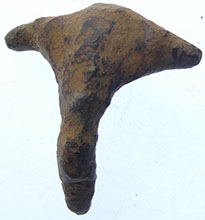 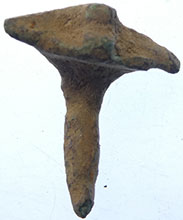 |
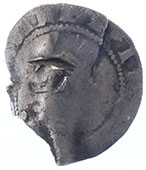 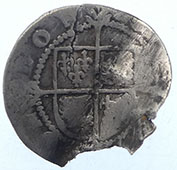 |
||||||||
| 2ndC Roman fibular brooch | 16thC Elizabeth 1st hammered silver half groat | ||||||||
 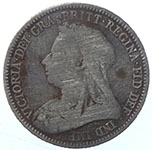 |
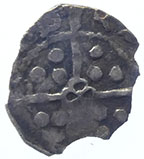  |
||||||||
| 1893 Victoria milled silver sixpence | 1476 -1480 Edward IV hammered silver penny - ClassXXIb B and key by neck - Quadrefoil with pellet at centre of reverse cross Archbishop Lawrence Booth Rev O/RA - York mint |
||||||||
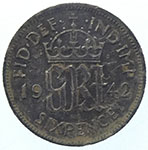 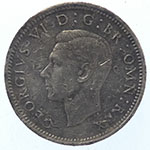 |
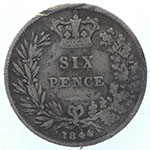 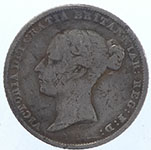 |
||||||||
| 1942 George VI milled silver sixpence | 1844 Victoria milled silver sixpence | ||||||||
17thC seal matrix - WB |
|||||||||
Rare 1553-54 Mary hammered silver penny Obv M.D.ROSA Rev CIVI/TAS/LON/DON - London mint |
|||||||||
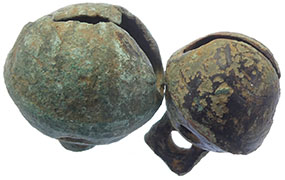 |
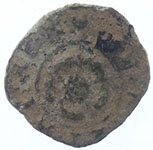 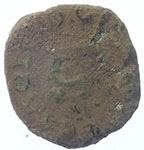 |
||||||||
| 18thC crotal bell | 1634 Chalres 1st hammered copper rose farthing | ||||||||
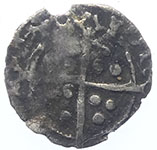 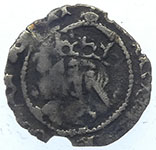 |
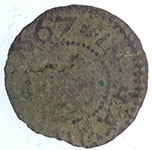  |
||||||||
1509- 26 Henry VIII hammered silver half penny Cross Fourchee- Narrow hair |
1667 hammered copper trade farthing | ||||||||
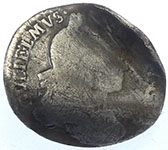 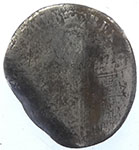 |
 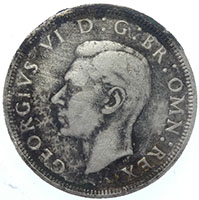 |
||||||||
| 1696 William III milled silver sixpence | 1938 George VI milled silver half crown (30 pence) | ||||||||
Mint mudlark find
Obv HANS* KRAVWINCKEL GOTESS* Rev *RECHEN*PEENING NVRENBER Four different Krauwinckel makers made “rose and orb” type jettons, including brothers Damianus and Hans (I) Krauwinckel, and Egidius and Hanns (II) Krauwinckel who were the sons of Damianus. Hans Krauwinckel (1562-1586) Hans Krauwinckel II (1586-1635) Hans Lauffer (1611-1632) Hans Schultes The reverse side of the “rose and orb” jettons depicts an imperial orb within a trilobe. The surrounding letters are often various verses from the Bible. Inscribed GOTES SEGEN MACHT REICH (“God’s blessing brings riches”). GETRIVW HANDT KOMBT DURCH ALLE (“Truth succeeds over all”) GLUCK BESCHERT IST VNGEWERT (“Fortune given is not guaranteed”) GOTES REICH BLIBT EWICK (“God’s Kingdom remains eternal”) GOTT ALLEIN DIE EERE SEI (“To God alone the glory”) HEIT ROTT MORGEN DOTT (“Red today, dead tomorrow”) VERBVM DOMINI MANET IN ETERN (“The Word of God remains eternal”) |
|||||||||
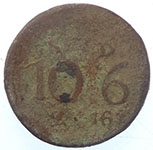 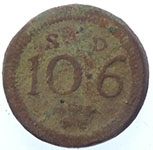 |
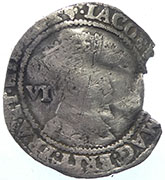  |
||||||||
Georgian gold half guinea coin weight - 10 shillings and 6 pence S10 6D |
1604 James 1st hammered silver sixpence | ||||||||
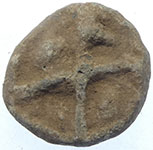 |
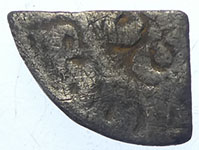 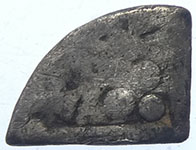 |
||||||||
| 15thC lead token | 1247 Henry III hammered silver voided longcross farthing | ||||||||
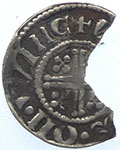 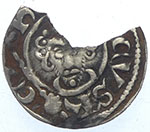 |
 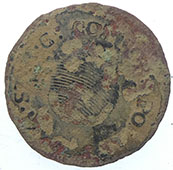 |
||||||||
1199-1216 John hammered silver short cross penny - Class 5 Obv + **CVS REX Rev **S.ON.WINC - Winchester mint |
1799 Continental 1/4 skilling milled copper coin | ||||||||
 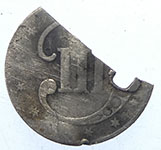 |
 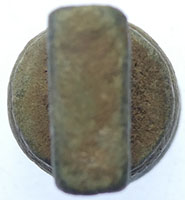 |
||||||||
| 1852 USA 3 cents | Georgian bell type trade weight | ||||||||
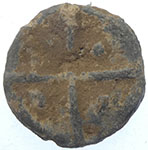 |
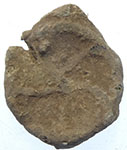 |
|
|||||||
| 15thC lead token | 15thC lead token | Medieval bar mount | |||||||
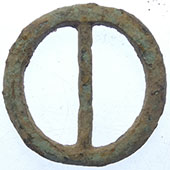 |
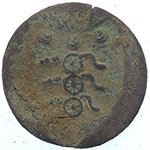 |
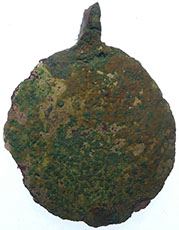 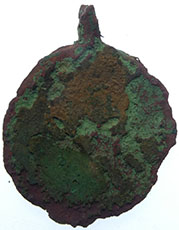 |
|||||||
| Medieval annualr buckle | 18thC Royal Artillery button | Early medieval gilded harness pendant | |||||||
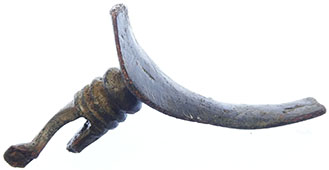  |
|||||||||
| Georgian spur | |||||||||
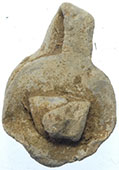 |
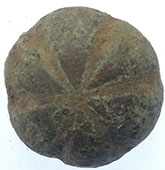 |
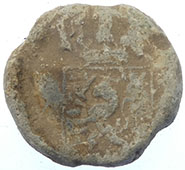 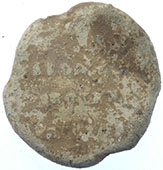 |
|||||||
| Post medieval lead cloth seal | Medieval sexfoil mount | Post medieval lead Continental lead bale seal | |||||||
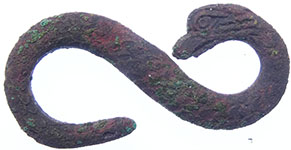 |
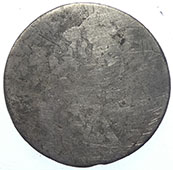  |
||||||||
| Cast copper alloy S-shaped zoomorphic strap fitting: a buckle or fastener in the form of snake dating from the Post-Medieval or Modern periods, about AD 1650-1900. | 17thC William III milled silver shilling | ||||||||
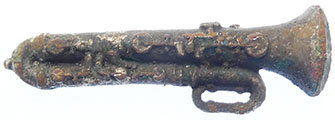 |
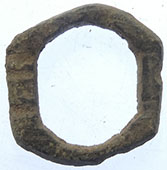 |
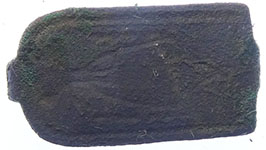 |
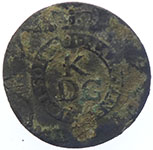 |
||||||
| 20thC Trumpet brooch | Medieval buckle | 18thC clog fastner | 19thC Kings dragoon guards button KDG |
||||||
 |
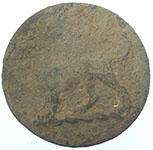 |
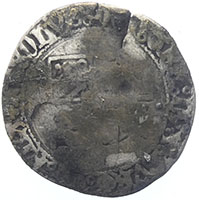 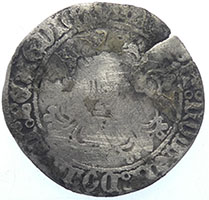 |
|||||||
| Roman buckle tongue | 19thC livery button | 1467 - 1475 Dutch Karel de Stoute -hammered silver dubbele stuiver - undated type | |||||||
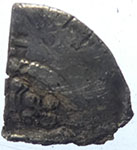  |
 |
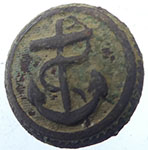 |
|||||||
| 1216 Henry III hammered silver short cross farthing | 1500-1700 mount | 1900's Generic merchant navy button | |||||||
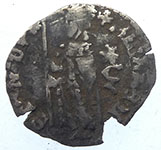 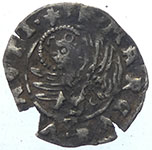 |
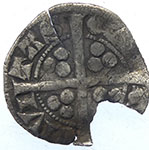 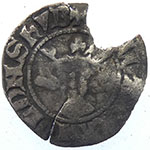 |
||||||||
Michele Steno 1400-1413 (Type 1) Italian States-Venice, Michele Steno as Doge (1400-1413), Soldino, Venice Mint |
1279 Edward 1st hammered silver penny Obv ***ANGL DNS hYB Rev CIVI/TAS/CA- Canterbury mint |
||||||||
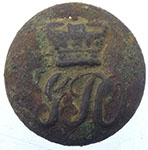 |
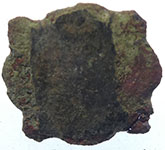 |
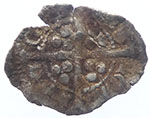 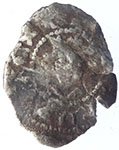 |
|||||||
| Georgian Engineers button | 1600-1700 mount A copper-alloy cast mount. The mount is quatrefoil in shape with a cusp in each angle. The reverse has two attachment lugs. |
1285/6 Edward 1st hammered silver farthing - new issue inner circle both sides - Type 28 Oval flan Rev EDWARDVS REX Rev CIVI/TAS/LON/DON - London mint |
|||||||
 |
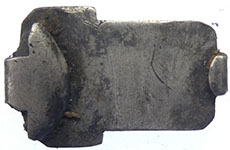 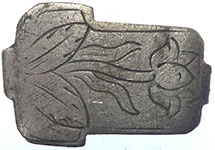 |
||||||||
| Medieval mount | 18thC silver clog fastener | ||||||||
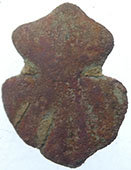 |
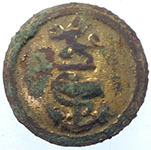 |
 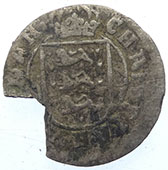 |
|||||||
| 1500-1700 mount | Post 1830 Navy button Honourable East India Company
|
1677 Denmark 2 Skilling silver coin | |||||||
 |
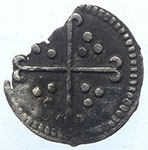 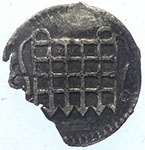 |
||||||||
| Georgian domino | 16thC Elizabeth 1st hammered silver half penny | ||||||||
 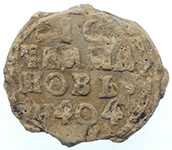 |
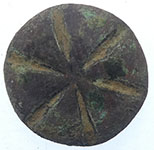 |
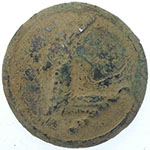 |
|||||||
| 1780 Russian lead bale seal | Medieval sexfoil mount | 19thC livery button | |||||||
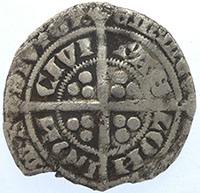  |
 |
||||||||
1351-2 Edward III hammered silver groat Rev CIVI/TAS/LON/DON - London mint |
Georgian apostle spoon | ||||||||
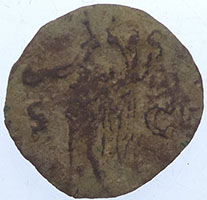 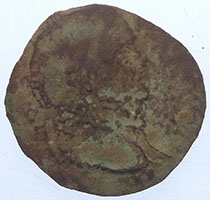 |
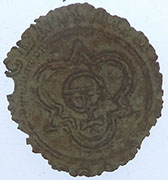 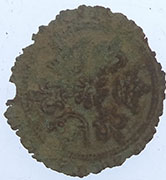 |
||||||||
Big Roman copper coin sent for ID Not too sure what I can say about this one and not be completely guessing. |
1562-1586 German jetton - Rose Orb type | ||||||||
Massive 16thC Henry VII/VIII trade weight Crown H cipher |
|||||||||
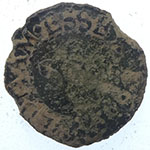 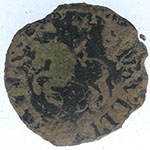 |
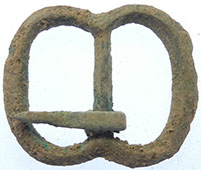 |
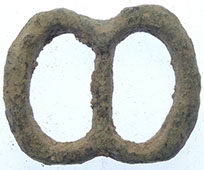 |
|||||||
| 1656 Samuel Salter of Dedham copper trade farthing | 1500-1700 buckle | 1500-1700 buckle | |||||||
Stunning Georgain fob seal |
|||||||||
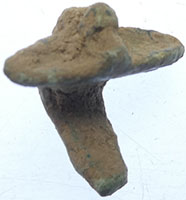 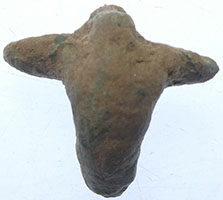 |
|
||||||||
| 2nd Roman fibular brooch | 18thC bayonet frog | ||||||||
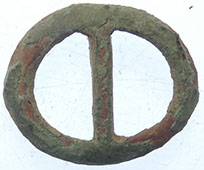 |
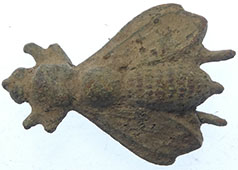 |
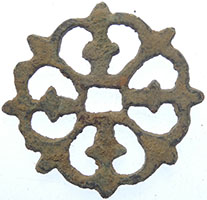 |
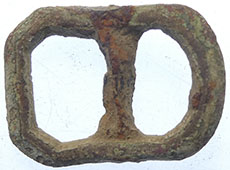 |
||||||
| 1500-1700 buckle | Victorian mount | Georgian draw pull back plate | 1500-1700 buckle | ||||||
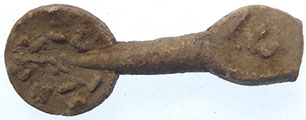 |
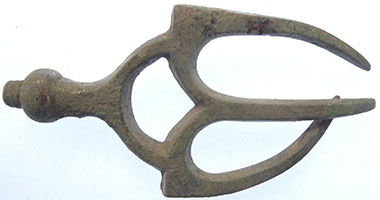 |
||||||||
| Complete Post medieval lead alnage cloth seal | Toasting fork ? | ||||||||
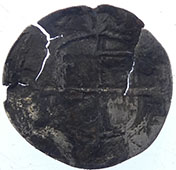 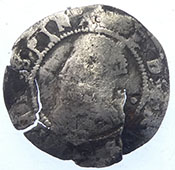 |
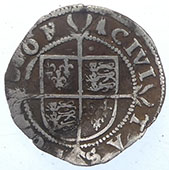 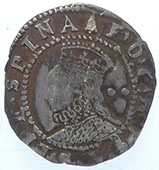 |
||||||||
| 16thC Elizabeth 1st hammered silver half groat | 1582-3 Elizabeth 1st hammered silver half groat- Bell mint mark | ||||||||
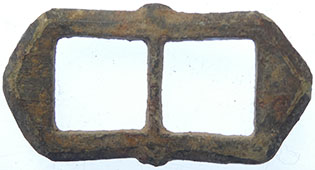 |
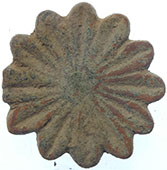 |
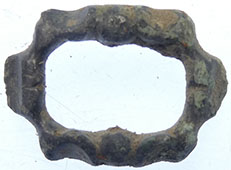 |
|||||||
| 1500-1700 buckle | 1500-1700 mount | Georgian shoe buckle | |||||||
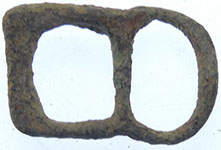 |
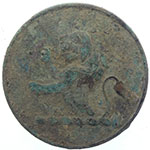 |
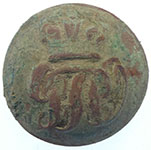 |
 |
||||||
| 1500-1700 buckle | 19thC livery button | Victorian General Post Office button | 1500-1650 buckle | ||||||
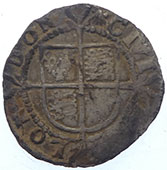 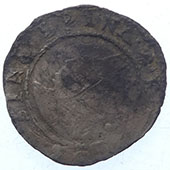 |
 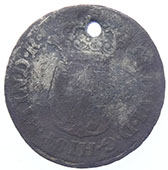 |
||||||||
| 1584-6 Elizabeth 1st hammered silver half groat- Escallop mint mark | 1757 Spanish Lima 1/2 real pillar Ferdinand VI peru | ||||||||
 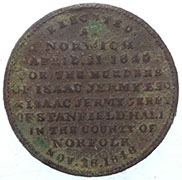 |
  |
||||||||
James Blomfield Rush for murders at Stanfield Hall - Nov 16th 1848 Who was executed on Castle Hill on Saturday April 1849 |
1808 Dutch copper coin | ||||||||
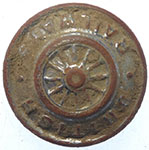 |
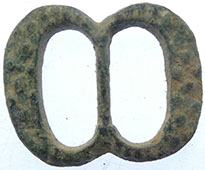 |
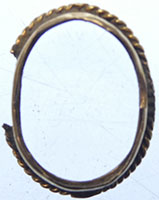 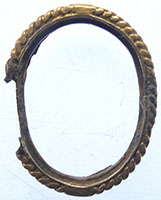 |
|||||||
| British railways button | 1500-1650 buckle | Georgian gold bezel | |||||||
 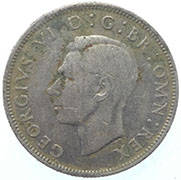 |
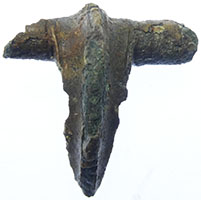 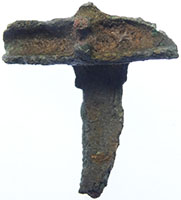 |
||||||||
| 1941 George VI milled silver florin (24 pence) | 2ndC Roman bronze fibular brooch | ||||||||
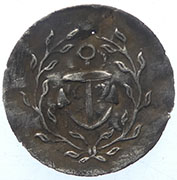 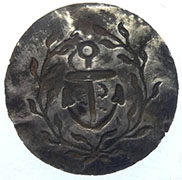 |
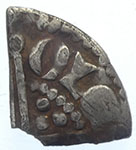 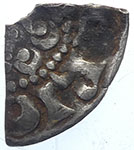 |
||||||||
| 19thC silver navy button face | 1247 Henry III hammered silver voided farthing Rev /OLE/ - Moneyer Nicole |
||||||||
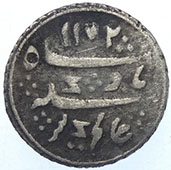 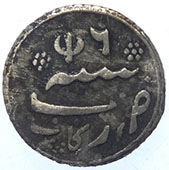 |
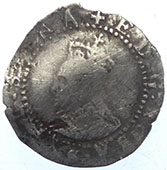 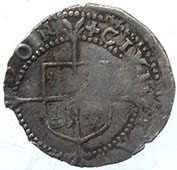 |
||||||||
Unknown foreign coin ID'd by Drew 1/8th rupee of Alamgir II, Madras Presidency, British India, circa 1817-1835. OhioDrew |
1578-9 Elizabeth 1st hammered silver half groat | ||||||||
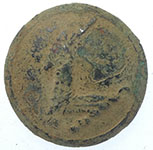 |
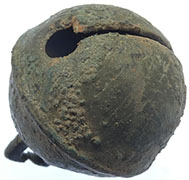 |
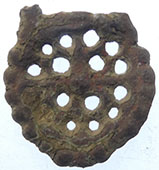 |
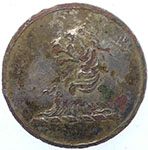 |
||||||
| 19thC livery button | 18thC crotal bell | 16thC Tudor clothing fastener | 19thC livery button | ||||||
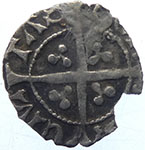 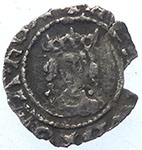 |
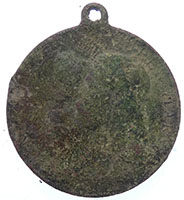 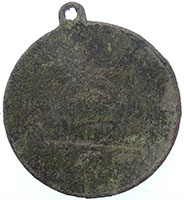 |
||||||||
1467-68 Edward IV hammered silver half penny - Trefoils by neck London light coinage |
1911 George V and Mary Queen consort medallion | ||||||||
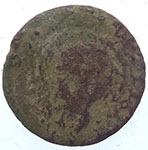 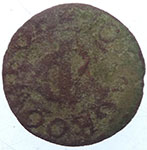 |
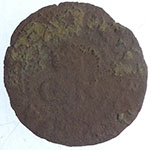 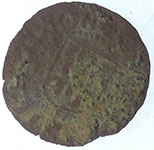 |
||||||||
| 17thC Joseph Gleson of Dedham hammered copper trade farthing | 17thC George Nicolson grocers of Thorpe Le Soken hammered copper trade farthing | ||||||||
10-40 AD Cunobelin Celtic gold qtr stater - reported to museum 1.33g, 10.76mm |
|||||||||
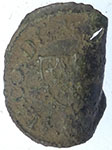 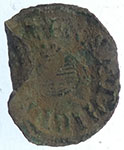 |
|
||||||||
| 17thC hammered copper trade farthing | 1792 silver spoon - George bust duty paid | ||||||||
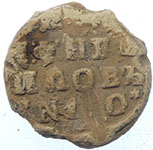  |
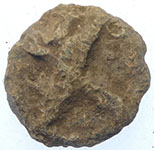 |
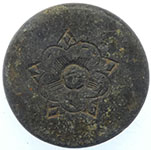 |
|||||||
| 1833 Rusaain lead bale seal | 15thC lead token | 18thC Navy button | |||||||
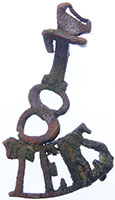 |
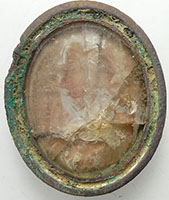 |
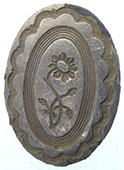 |
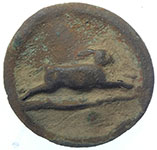 |
||||||
| 8th Lancashire Artillery Volunteers | Georgian intaglio | Georgian cuff link | 19thC hunting button | ||||||
 |
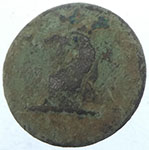 |
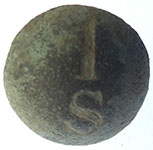 |
|||||||
| Georgian watch winders | 19thC livery button |
|
|||||||
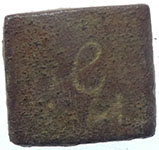 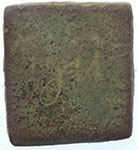 |
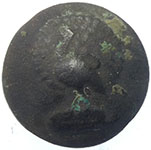 |
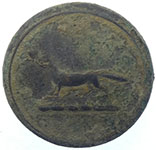 |
|||||||
| 18th Apothecary weight | 19thC livery button | 19thC livery button | |||||||
 |
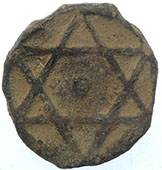 |
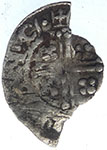 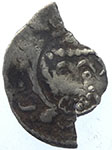 |
|||||||
| 1500-1700 mount | Medieval lead token | 1189-199 Richard 1st hammered silver short cross penny - Lombardic E- Cross pattee i.m - Class4 Rev ON,E.+ Canterbury mint |
|||||||
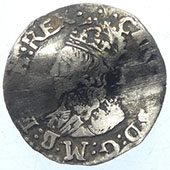 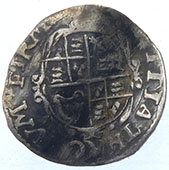 |
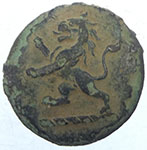 |
||||||||
| 1641-3 Charles 1st hammered silver half penny - mintmark 2 dots | 19thC livery button | ||||||||
 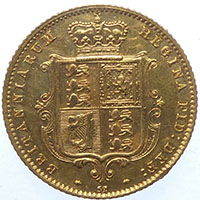 |
|||||||||
1871 Victoria milled gold half sovereign 3.99g, 19.37mm |
|||||||||
1891 Victoria milled gold full sovereign 8.0g, 21.92mm |
|||||||||
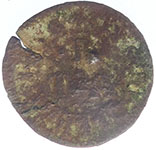 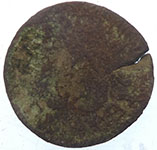 |
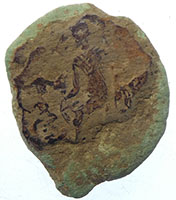 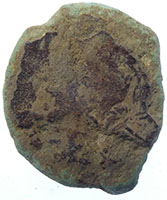 |
||||||||
| 17thC hammered copper trade farthing | 2ndC Roman bronze coin | ||||||||
 |
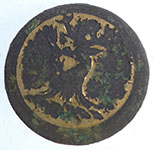 |
||||||||
| Post medieval knife handle | Medieval buckle tongue | 19thC livery button | |||||||
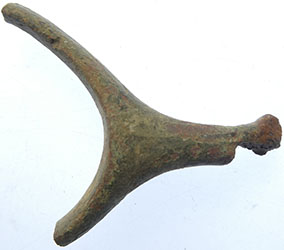 |
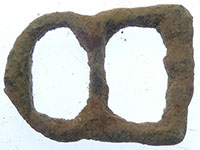 |
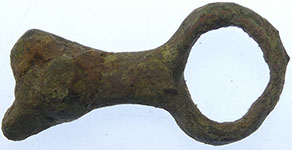 |
|||||||
| Georgian spur | 1500-1650 buckle | C10thC Saxon harness cheek poece | |||||||
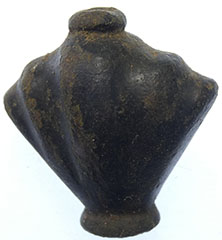 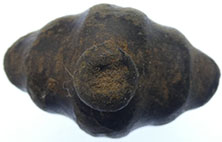 |
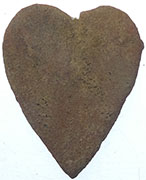 |
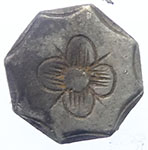 |
|||||||
| Post medieval dagger pommel | 1500-1700 mount | 18thC silver navy button | |||||||
 |
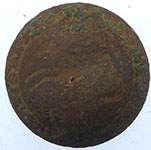 |
||||||||
| Interesting widget like a nutcracker arm ? | Unrecorded 5th Dragoon guards button Description: Crowned Hannover Horse over V D.G with VESTIGIA NULLA RETRORSUM around. Category: Dragoons Type of button: Slightly Convex; Metal: Copper Alloy, silver gilded. Backmark: ; Date: c1780-1796 Crimera war period The 5th Dragoons became Princess Charlotte of Wales's Dragoon Guards in 1804. |
||||||||
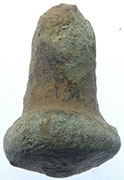 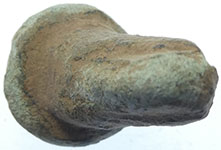 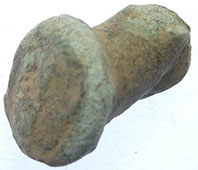 |
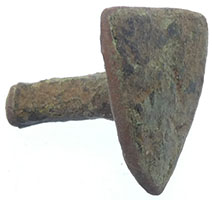 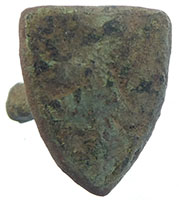 |
||||||||
| Roman bronze mount | Medieval heradlic shield mount | ||||||||
 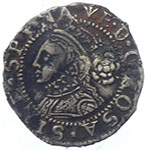 |
 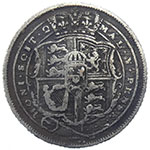 |
||||||||
| 1561 Elizabeth 1st hammered silver penny | 1819 George III milled silver sixpence | ||||||||
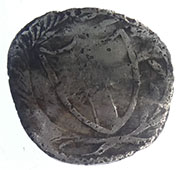 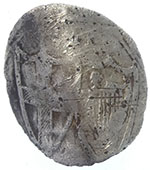 |
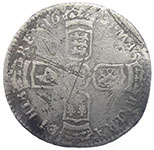 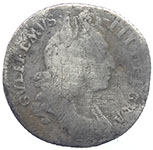 |
||||||||
| 1649 Commonwealth hammered silver half groat | 1696 William III milled silver sixpence | ||||||||
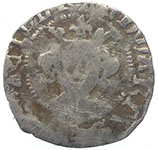 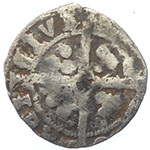 |
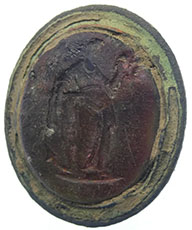 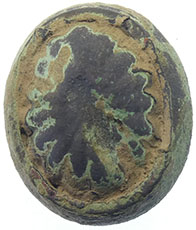 |
||||||||
1352-1353 Edward III hammered silver penny - Pre treaty- Archiepiscopal Obv + EDWARDVS ****ANGLI Rev CIVI *** RACI - York mint |
Georgian fob seal | ||||||||
 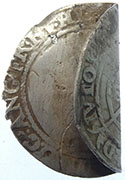 |
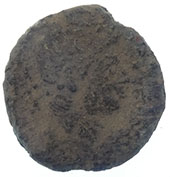 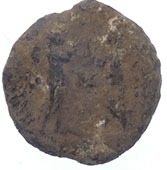 |
||||||||
| 1580 Elizabeth 1st hammered silver sixpence | Mid 4thC Roman bronze coin sent for ID You might call this "the last gasp of Constantine's centenionalis". Mark |
||||||||
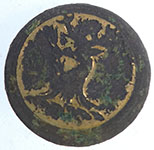 |
 |
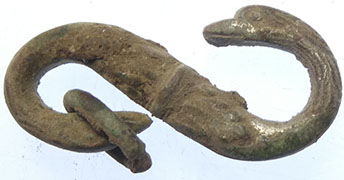 |
|||||||
| 19th livery button | Georgian button | Victorian Army S buckle | |||||||
 |
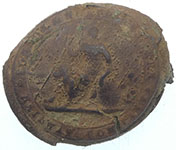 |
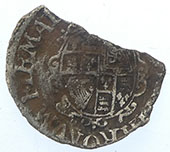 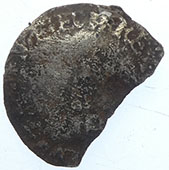 |
|||||||
| Gilded mount | Victorian railway button | 1625 Charles 1st hammered silver half groat | |||||||
Enamelled medieval harness pendant |
|||||||||
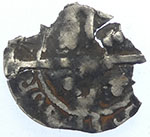 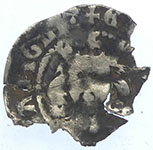 |
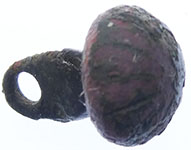 |
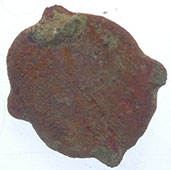 |
|||||||
1352-1353 Edward III hammered silver penny - Pre treaty- Archiepiscopal Obv + **ANGLI Rev **TOR**- Canterbury mint |
16thC Tudor button | 1500-1700 mount | |||||||
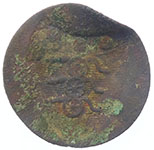 |
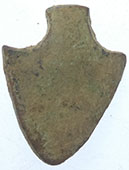 |
  |
|||||||
| 18thC Royal artillery button | 1500-1700 mount | 1216 Henry III hammered silver short cross half penny | |||||||
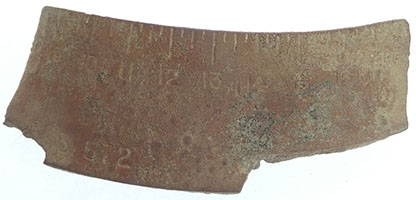 |
|
||||||||
| WWII AA flack shell fragment | 1625 Charles 1st hammered silver half penny - rose both sides no legend type | ||||||||
 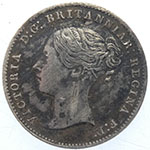 |
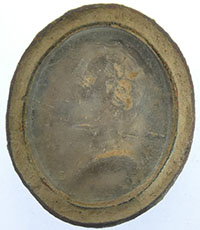 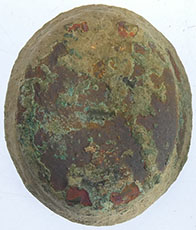 |
||||||||
| 1865 Victoria milled silve three pence | Georgian fob seal - bust facing left | ||||||||
 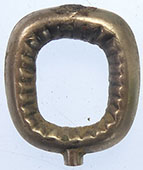 |
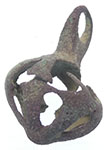 |
||||||||
| Georgian watch winder | 16thC Tudor button | ||||||||
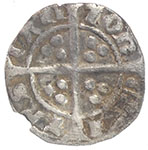 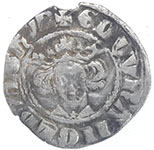 |
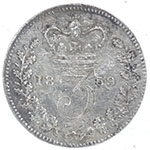 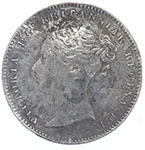 |
||||||||
1299-1300 Edward 1st hammered silver penny-Class 9 Obv +EDWR' ANGL DNS hYB' Rev CIVI/TAS/CAN/TOR - Canterbury mint |
1859 Victoria milled silver three pence | ||||||||
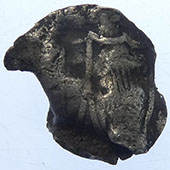 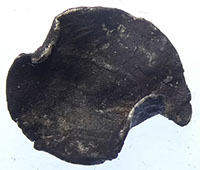 |
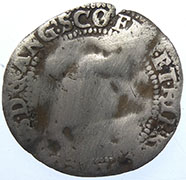 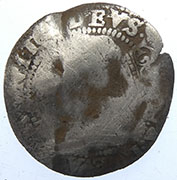 |
||||||||
| 1649 Commonwealth hammered silver half groat | 1603 James 1st hammered silver sixpence | ||||||||
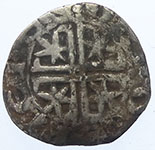 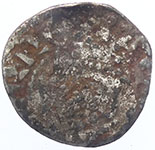 |
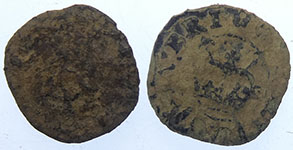 |
||||||||
| 1195 Scottish William 1 The Lion hammered silver penny | 1634 Charles 1st hammered copper rose farthings | ||||||||
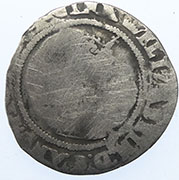 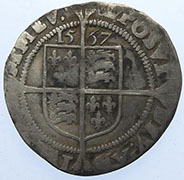 |
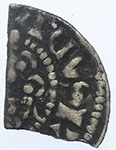 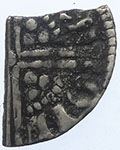 |
||||||||
| 1567 Elizabeth 1st hammered silver sixpence | 1247 Henry III hammered silver voided half penny | ||||||||
 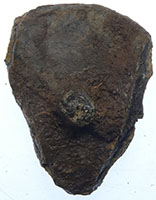  |
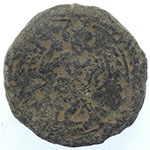 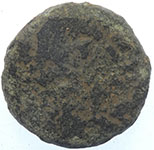 |
||||||||
Medieval heraldic enamelled shield mount - Thomas de Werblintone ? Lozengy azure and Or ? Lozengy azure and argent ? |
15thC Angel coin weight | ||||||||
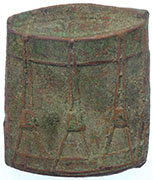 |
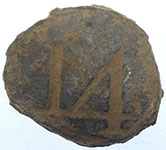 |
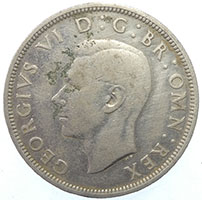  |
|||||||
| Army mount | 18thC Pewter button The 14th was the Bedfordshire Regt of Foot until 1809 when it changed to the Buckinghamshire. This design style remained in use until 1838. |
1941 George VI milled silver halfcrown | |||||||
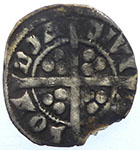 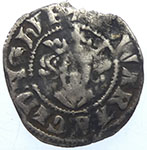 |
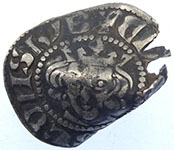 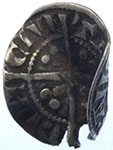 |
||||||||
1279 Edward 1st hammered silver penny Obv +EDWAR ANGL DNS hYB Rev CIVI/TAS/LON/DON - London mint |
1279 Edward 1st hammered silver penny Obv +EDWAR ANGL DNS hYB Rev CIVI/TAS/LON/DON - London mint |
||||||||
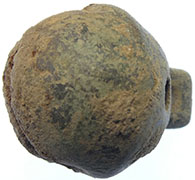 |
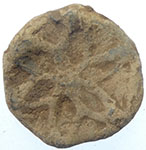 |
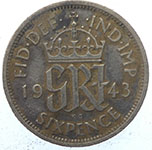 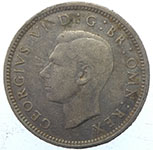 |
|||||||
| 18thC crotal bell | 15thC lead token | 1943 George VI milled silver sixpence | |||||||
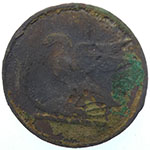 |
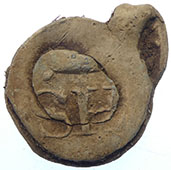 |
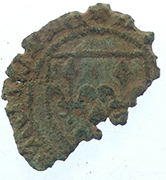 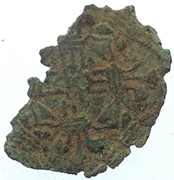 |
|||||||
| 19thC livery button | Post medieval lead bale seal | Medieval French 'shield of France' type - 3 Lis in a shield | |||||||
 |
 |
  |
|||||||
| 1500-1700 mount | 15thC lead token | 1216 Henry III hammered silver short cross halfpenny Obv RICVS R** Rev +IV N** |
|||||||
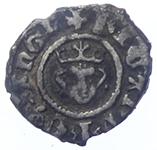 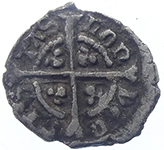 |
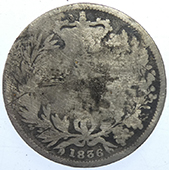 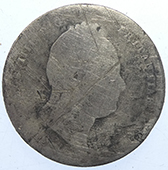 |
||||||||
1377 Richard II hammered silver farthing Obv +RICARDxREXx:ANGL Rev CIVI/TAS/LON/DON - London mint |
1836 William IV milled silver shilling | ||||||||
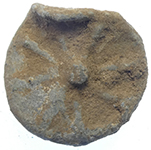 |
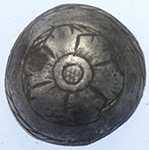 |
 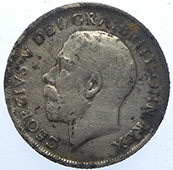 |
|||||||
| 15thC lead token | 18thC Royal Navy silver button | 1912 George V milled silver shilling | |||||||
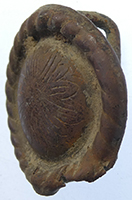 |
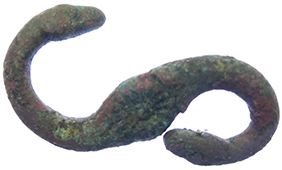 |
|
|||||||
| Georgian belt slide | A cast copper alloy, S shaped belt fastener probably of post medieval date, AD 1550 - 1700. | Georgian fob seal - horse and rider facing right | |||||||
 |
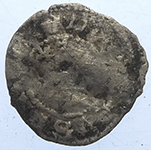 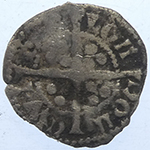 |
||||||||
| Small post medieval copper tool - possible ear wax scraper | 1327 Edward III hammered silver half penny - inner circles both sides Obv EDW**VS Rev CIVI/TAS/LON/DON - London mint |
||||||||
  |
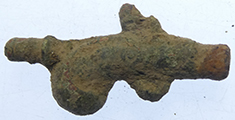 |
||||||||
| 1247 Henry III hammered silver voided half penny | Georgian watch winder | ||||||||
 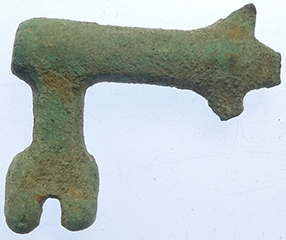 |
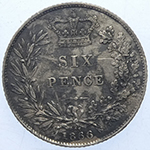 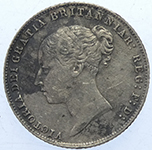 |
||||||||
| Medieval key | 1866 Victorian milled silver sixpence | ||||||||
 |
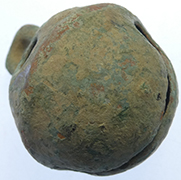 |
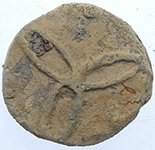 |
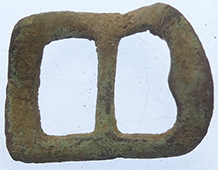 |
||||||
| 1500-1700 mount | 18thC crotal bell | 15thC lead token | 1500-1700 buckle | ||||||
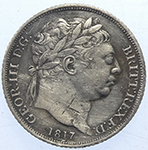 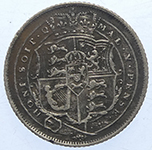 |
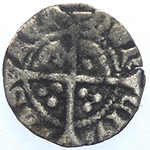 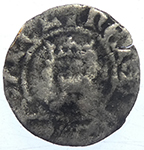 |
||||||||
| 1817 George III milled silver sixpence | 1422-61 Henry VI hammered silver half penny Obv +hENR**ANGL Rev CIVI/TAS/LON/DON - London mint |
||||||||
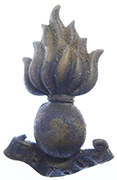 |
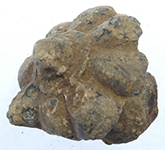 |
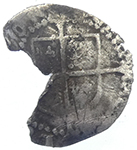 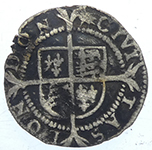 |
|||||||
| WWII Royal Fuseliers lapel badge | Georgian lead tobacco jar lid handle | 1573-8 Elizabeth 1st hammered silver penny - Martlet mint mark | |||||||
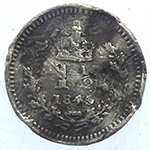 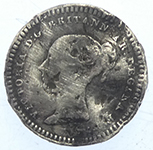 |
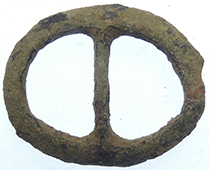 |
 |
|||||||
| 1845 Victoria milled silver one and a half pence | 1500-1700 buckle | 17thC sword belt fitting | |||||||
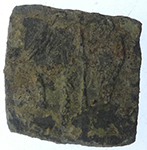 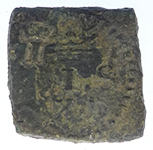 |
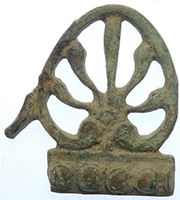 |
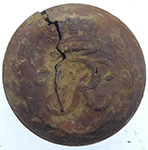 |
|||||||
16thC Elizabeth 1st Quarter gold angle - revalued coin weight Rev Crown IXD Rev Angel |
Victorian mount | Georgian Engineers button | |||||||
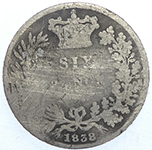 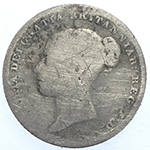 |
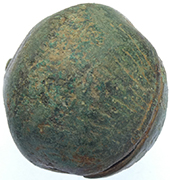 |
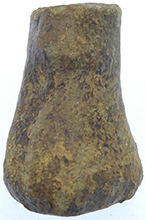 |
|||||||
| 1838 Victoria milled silver sixpence | 18thC crotal bell | Medieval bronze pot foot | |||||||
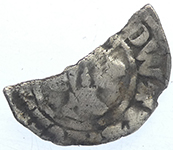  |
 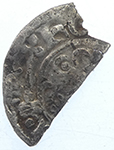 |
||||||||
1279 Edward 1st hammered silver penny Obv *DWARD ANGL ** Rev TAS/DVR*** |
1216 Henry III hammered silver short cross half penny Rev AVR.ON - Durham mint |
||||||||
 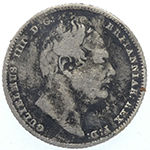 |
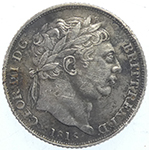 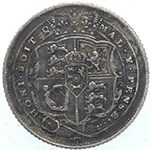 |
||||||||
| 1834 William IV milled silver six pence | 1816 George III milled silver sixpence | ||||||||
Roman silver coin - sent for ID This is a weird one to find in Britain! It appears to be a Roman Provincial issue from somewhere in the east. It seems to portray either Septimius Severus or Marcus Aurelius. Fun fact: Severus declared himself "adopted" by, and the heir to Marcus Aurelius' fame and auctoritas. Aurelius had been dead for almost 20 years, so he wasn't in any position to object. The "crown" he's wearing looks sort of like ivy leaves, so, maybe Dionysos? He's not usually bearded... Mark |
|||||||||
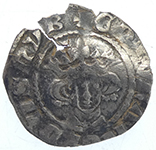 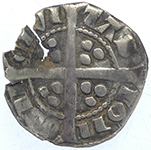 |
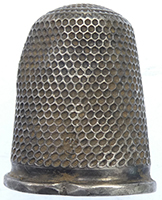 |
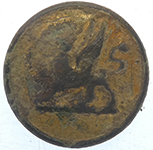 |
|||||||
1279 Edward 1st hammered silver penny Obv +EDWR ANGL DNS hYB Rev CIVI/TAS/LON/DON - London mint |
Georgian silver thimble | 19thC livery button | |||||||
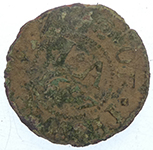  |
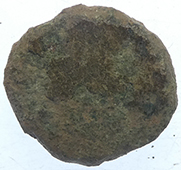 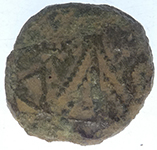 |
||||||||
| 1657 John Allen of Ispwich Suffolk hammered copper trade farthing | Medieval coin weight - ship type | ||||||||
|
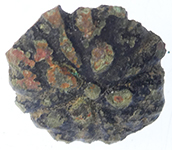 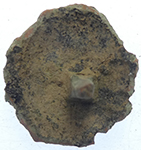 |
||||||||
Updated ID on this Saxon bronze brooch I noticed a brooch on your website under October 2023 finds which is an early medieval Ansate brooch. Anglo-Saxon finds are not common in Essex so anything that can be confidently identified and closely dated should definitely be recorded. Here’s one from Cambridgeshire I recorded recently: Record ID: ESS-C6B4F1 - EARLY MEDIEVAL brooch (finds.org.uk). You can also read more about them on the brooches guide here: Brooches – Finds Recording Guides. Do you have all the details to be able to record it? FLO |
Medieval mount | ||||||||
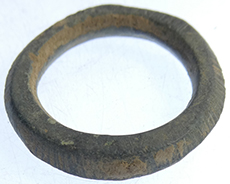 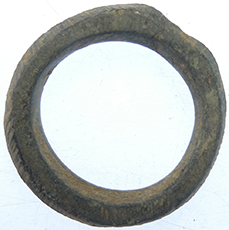 |
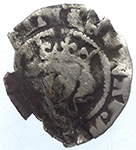 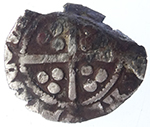 |
||||||||
| Medieval decorated harness ring | 1279 Edward 1st hammered silver penny Obv +EDWAR AN**** hYB Rev CIVI/TAS/LON/DON - London mint |
||||||||
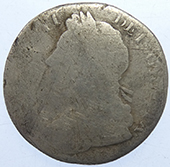 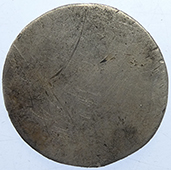 |
|
||||||||
| 1727-60 George II milled silver shilling | Victoria belt buckle | ||||||||
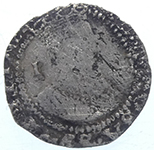 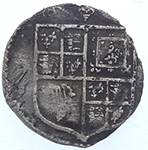 |
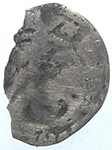 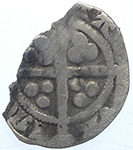 |
||||||||
| 1603-4 James 1st hammered silver penny | 1279 Edward 1st hammered silver penny Obv DVR/EM - Durham nint |
||||||||
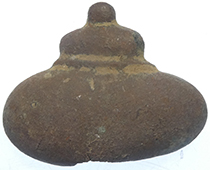 |
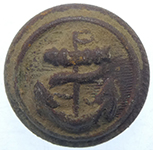 |
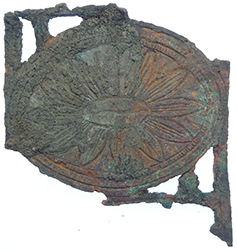 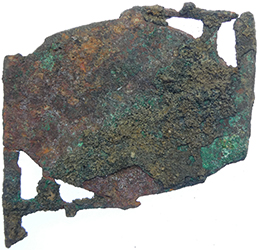 |
|||||||
| 1500-1700 mount | 1900's Generic Merchant navy button | Enameled Horse harness decoration | |||||||
|
 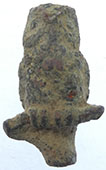 |
||||||||
Victorian British key registry and accident assurance tag “ For prompt return of these keys to nearest police office or address on other side “.
5/ REWARD , payable by Registry Company if Insurance is in force.
192 Hope St Glasgow 5 shilling reward |
Roman owl mount | ||||||||
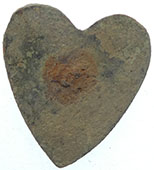 |
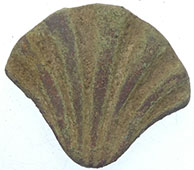 |
 |
|||||||
| 1500-1700 mount | 1500-1700 mount | 1500-1700 mount | |||||||
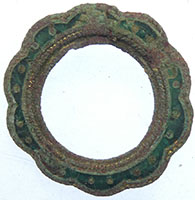 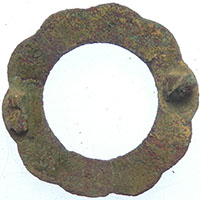 |
|
||||||||
| Georgian enameled brooch | Alloy badge made in 'Hong Kong' | ||||||||
  |
 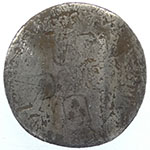 |
||||||||
| 1895 Victorian milled silver three pence | 1696 William III milled silver sixpence love token | ||||||||
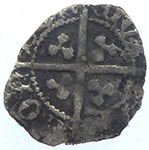  |
  |
||||||||
1300-10 Edward II hammered silver farthing- new issue with inner circles both sides - oval flan - Type 28d Rev CIVI/TAS/LON/DON - London mint |
1696 William III milled silver sixpence love token | ||||||||
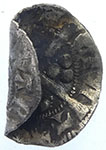 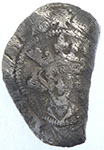 |
 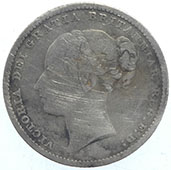 |
||||||||
1279 Edward 1st hammered silver penny Obv +EDWAR **** DNS hYB |
1883 Victorian milled silver six pence | ||||||||
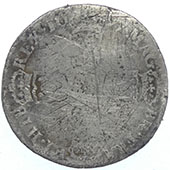 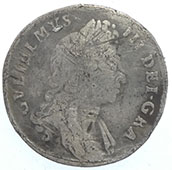 |
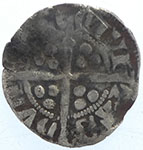  |
||||||||
| 1697 William III milled silver shilling | 1279 Edward 1st hammered silver penny Obv +EDWAR ANGL DNS hYB Obv CIVI/TAS/DVN/*** - Durham nint |
||||||||
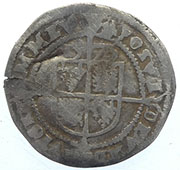 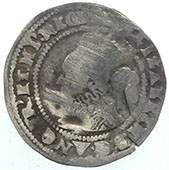 |
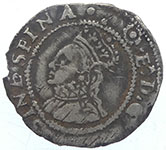 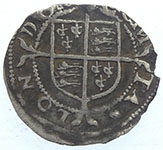 |
||||||||
| 1573 Elizabeth 1st hammered silver three pence | 1565 Elizabeth 1st hammered silver penny- Rose mint mark | ||||||||
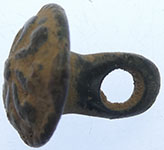 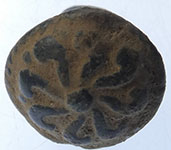 |
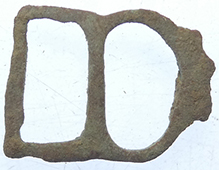 |
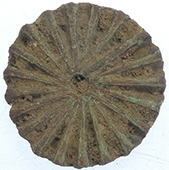 |
|||||||
| 16thC Tudor button | 1500-1700 buckle | Georgian pastry jigger wheel | |||||||
1stC BC Celtic cosmetic wode grinder |
|||||||||
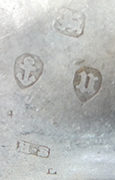 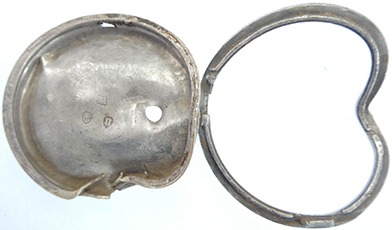 |
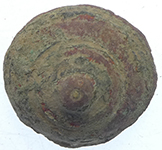 |
||||||||
1894 Silver pocket watch parts - Birmingham hall mark - Marker H.S H Samuel Ltd
Originally registered as Harriet Samuel. Watchmaker & jeweller, Market Street, Manchester |
1500-1700 mount | ||||||||
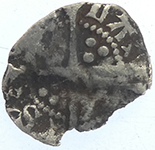 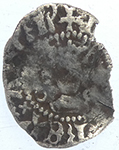 |
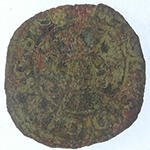  |
||||||||
1422- 61 Henry VI hammered silver farthing - annulets by neck - Type A2 -plain cross Obv +hENRICx REX ANGL Rev VIL/ LAx/ CAL/ IS'x- Calais mint Obv +h****REXxANGL' Rev ASx/**/LAx |
1634 Charles 1st hammered copper rose farthing | ||||||||
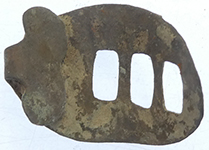 |
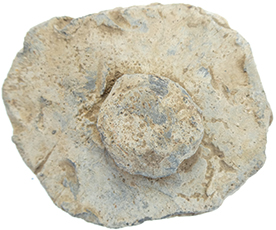 |
  |
|||||||
| 18thC clog fastener | Medieval lead pot mend | Unknown decorated lead hanger | |||||||
|
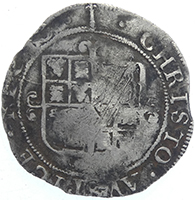 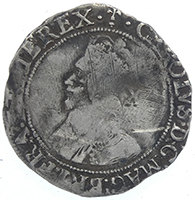 |
||||||||
| Interesting mount ? | 1646-8 Charles 1st hammered silver shilling - Sceptre mint mark Tower mint under Parliament |
||||||||
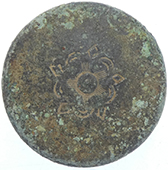 |
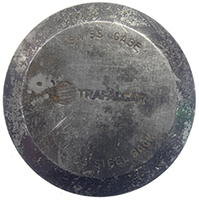 |
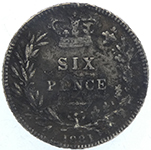 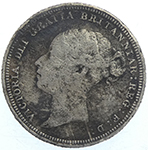 |
|||||||
| 18thC Royal Navy button | 2OthC Trafalgar stainess steel watch back | 1881 Victoria milled silver six pence | |||||||
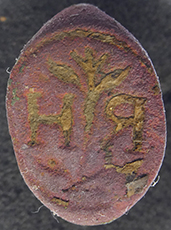 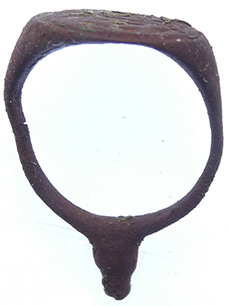 |
  |
||||||||
| 17th C seal ring - RH | 16th Elizabeth 1st hammered silver penny | ||||||||
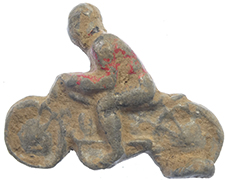 |
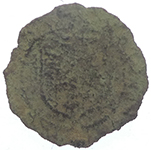 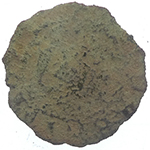 |
||||||||
| 1914-45 lead toy motorcycle | 17thC hammered copper trade farthing | ||||||||
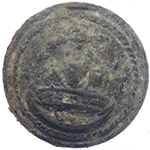 |
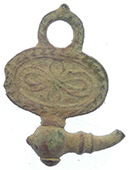 |
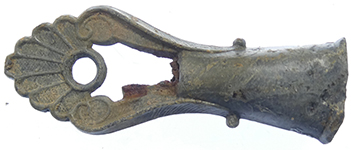 |
|||||||
| 1900's Generic merchant navy button | Georgian watch winder | Alloy cord end | |||||||
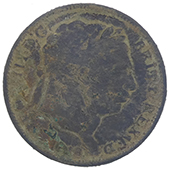 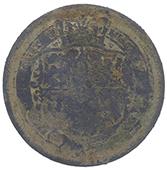 |
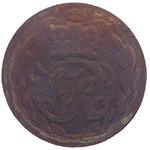 |
||||||||
| 1818 George III milled silver shilling - forgery | Victorian Royal Engineers button | ||||||||
 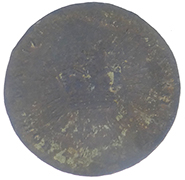 |
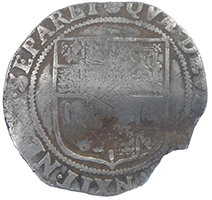  |
||||||||
1820-1821 Token - Caroline of Brunswick, Queen Consort of England ObverseHead of Queen Caroline with a feather headdress, facing to left. Legend around. Script: Latin Lettering: CAROLINE.QUEEN CONSORT OF ENGLAND. ReverseThe royal crown irradiated in the center with the legend around. Script: Latin Lettering: BORN MAY 17.1768. MARRIED APPRIL 8.1795.
|
1605-6 James 1st hammered silver shilling - Rose mint mark | ||||||||
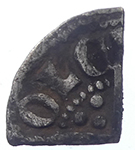 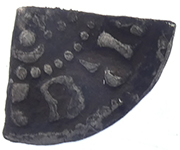 |
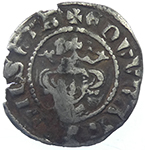 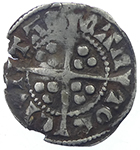 |
||||||||
1247 Henry III hammered silver voided longcross farthing Rev /OLE/ - Moneyer Nicole |
1299-1300 Edward 1st hammered silver penny - Class 9b - Closed backed backed E- Cross pattee Obv +EDWR ANGL DNS hYB Rev CICI/TAS/CAN/TOR - Canterbury mint |
||||||||
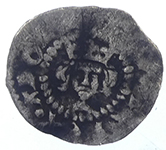 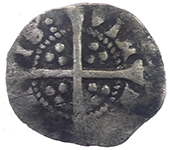 |
|
||||||||
1413-22 Henry V milled silver farthing- Type 1 Obv ***** REX.ANGL* Rev VIL/****/IS: - Calais mint |
1864 Silver pocket watch - Maker AB Abraham Barrier
|
||||||||
 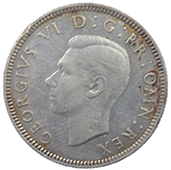 |
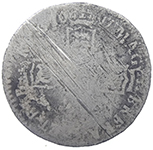 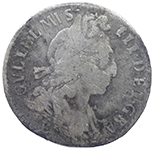 |
||||||||
| 1937 George V milled silver shilling | 1697 William III milled silver sixpence | ||||||||
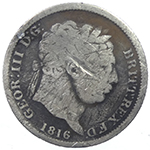 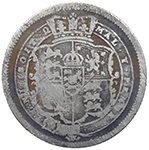 |
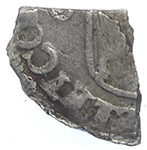 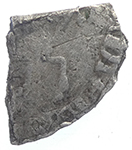 |
||||||||
| 1816 George III milled silver sixpence | Unknown foreign silver coin fragment | ||||||||
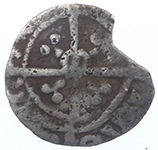 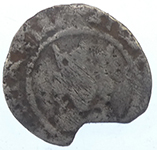 |
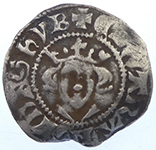 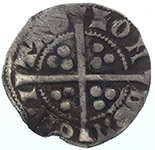 |
||||||||
1471-83 Edward IV hammered silver half penny Bishop of Durham - Bishop brooth D in centre of cross |
1307-1327 Edward II hammered silver penny- - Type 11- broken peal orament to left Obv +EDWAR ANGL DNS hYB Rev CIVI/TAS/LON/DON - London mint |
||||||||
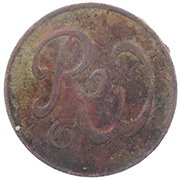 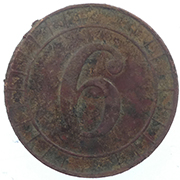 |
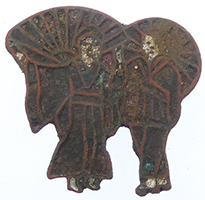 |
||||||||
| 20thC 6 pence gaming token | 20thC badge | ||||||||
 |
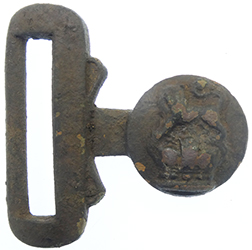 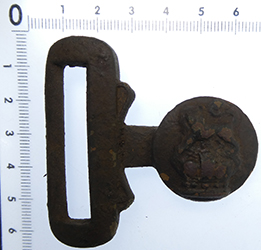 |
||||||||
| Large Victorian Prince of Wales feathers mount | Huge British Army Buckle "DIEU ET MON DROIT" Ceremonial Belt Locket Hobson of London | ||||||||
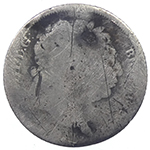 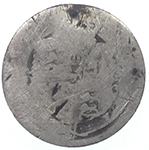 |
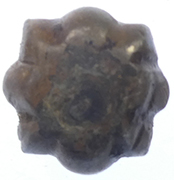 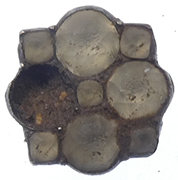 |
||||||||
| 19thC George III milled silver sixpence | Edwardian silver and glass stone jewelry fragment | ||||||||
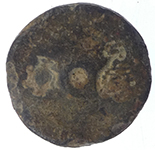 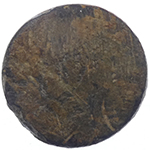 |
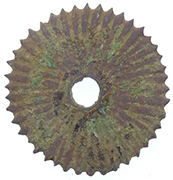 |
 |
|||||||
| 17thC London trade weight | Georgian pastry jigger | 1500-1700 mount | |||||||
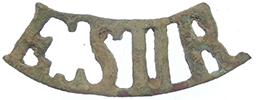 |
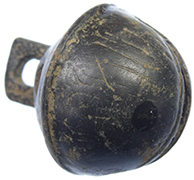 |
  |
|||||||
| Army lapel badge | 18thC crotal bell | 1216 Henry III hammered silver voide longcross half penny- Class 8 Obv SREX Rev N.LVN - London mint |
|||||||
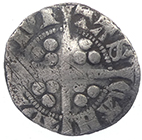  |
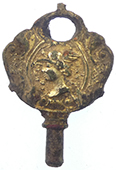 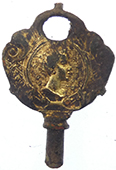 |
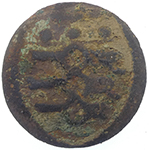 |
|||||||
1279 Edward 1st hammered silver penny Obv +EDWAR ANGL DNS hYB Rev CIVI/TAS/CAN/TOR - Canterbury mint |
Neat gilded Georgian watch winder | 18th Royal Artillery button | |||||||
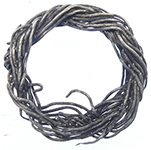 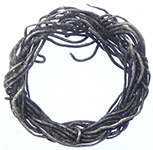 |
 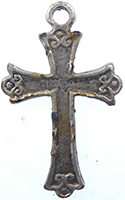 |
||||||||
| Silver wire finger ring | Victorian silver pendant | ||||||||
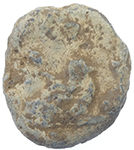 |
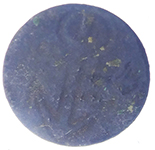 |
|
|||||||
| 17thC lead token | Capt / Commander - 1774-1787 RN Master & Mate - 1787-1807 RN Surgeon - 1787-1805 |
Georgian decorated clasp | |||||||
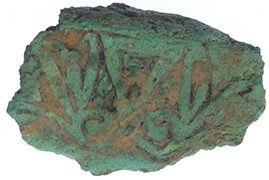 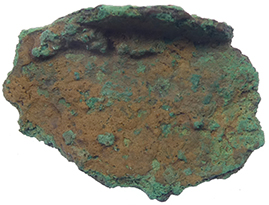 |
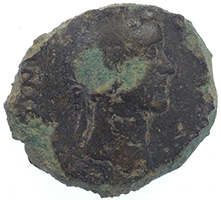 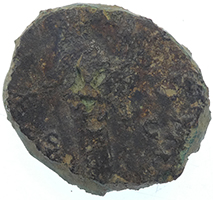 |
||||||||
| Medieval decorated copper plate fragment | 2nd C Roman bronze coin sent for ID Antoninus Pius 138-161 AD I'm afraid I can't add much, there's too little detail. It's still Antoninus Pius, the reverse has S - C in fields and a standing personification or deity, too damaged to say who - concentric legend, only hits of it visible COS III is a common reverse legend for Pius who struck multiple dozens of types of asses, so anything more I were to try to tell you would be strictly conjecture. |
||||||||
1797 George III milled gold third guinea 2.76g, 16.85mm |
|||||||||
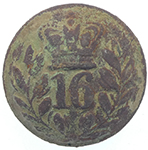 |
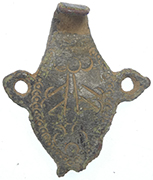 |
 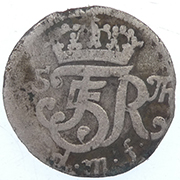 |
|||||||
16th Regiment of foot O/R's - 1855-1881 |
17thC clothing fastener | 1762 Friedrich von Dänemark -1 Marien Groschen Rev 1 Marien Gros: OLM 1762 |
|||||||
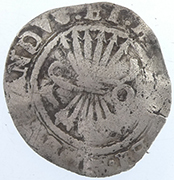 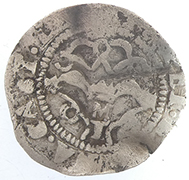 |
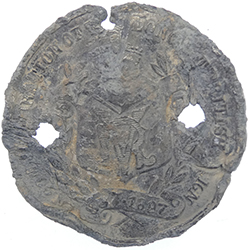 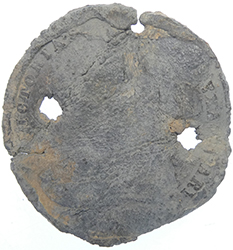 |
||||||||
Ferdinand & Isabella Half Real Circa, 1474-1504. Silver Bundle of arrows, +FERNANDVS ET ELISABET D G. R. Flourished crown, M T mint mark below, Toledo mint.
|
1897 Victoria medallion-diamond jubilee | ||||||||
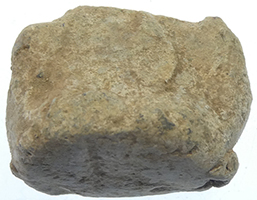 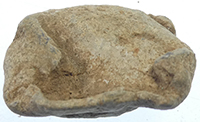 |
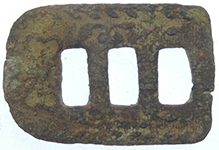 |
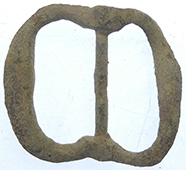 |
|||||||
| 1640's lead gunpowder measure and cap | 18thC clog fastener | 1500-1700 buckle | |||||||
 |
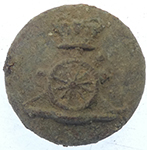 |
 |
|||||||
| Georgian watch winders | WWII Royal Artillery button | WWI Army lapel badge | |||||||
 |
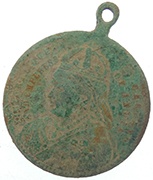 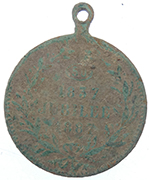 |
||||||||
| Victorian crown mount | 1887 Victoria silver jubilee pendant | ||||||||
 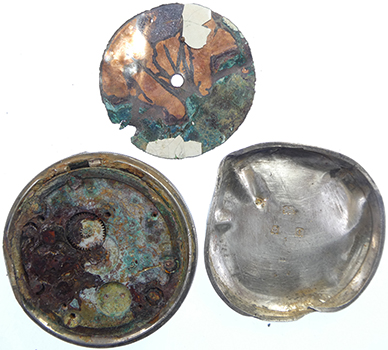  |
|||||||||
| 1902 silver pocket watch - Birmingham mint | |||||||||
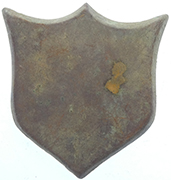 |
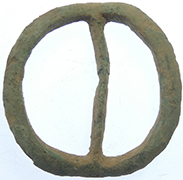 |
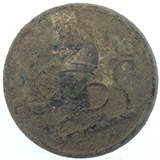 |
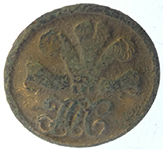 |
||||||
| 1500-1700 mount | 17thC annular buckle | 19thC livery button | Tendering Volunteer Calvary ? | ||||||
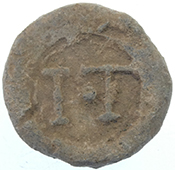 |
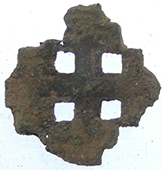 |
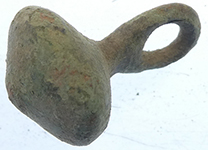 |
 |
||||||
| 17thC lead token | Medieval knights templar badge | 16thC Tuodr button | 18th crotal bell | ||||||
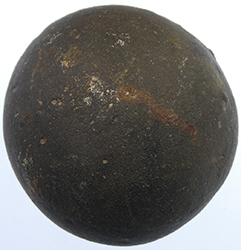  |
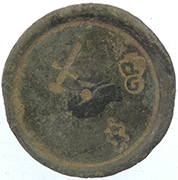 |
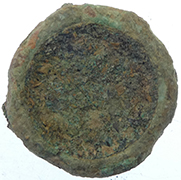 |
|||||||
| 16thC stone cannon ball | Georgian trade weight - London Crown G | Georgian trade weight | |||||||
Great mix of 18thC toy cannons some with exploded barrels |
|||||||||
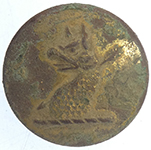 |
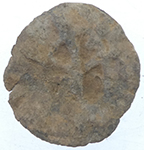 |
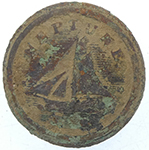 |
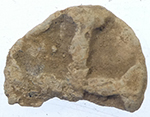 |
||||||
| 19thC livery button | 15thC lead token | 'Neptune' button | Medieval lead token | ||||||
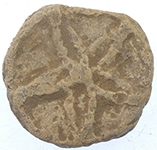 |
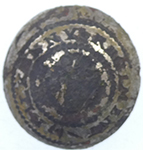 |
  |
|||||||
| 15thC lead token | 1855- 1891 Kilkenny Regiment button A Victorian silver plated button centred with a crowned maid of Erin harp in a garland of shamrock and emblazoned 'KILKENNY'; |
1904 Edward VII milled silver sixpence | |||||||
  |
  |
||||||||
| 1916 George V milled silver three pence | 1247 Henry III hammered silver voided longcross penny Obv hENRICVS REX Obv HEI/MON/LV/NDE- Moneyer Heimer - of London mint |
||||||||
 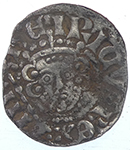 |
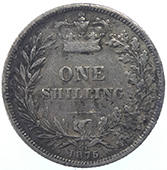 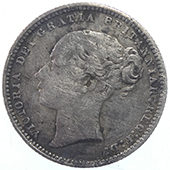 |
||||||||
1247 Henry III hammered silver voided longcross penny Obv hENRICVS REX III Obv NOR/W/hVG/EON - Moneyer Hvge of Norwich mint |
1875 Victoria milled silver shilling | ||||||||
  |
  |
||||||||
| 1920 George V milled silver three pence | 1216 Henry III hammered silver short cross half penny | ||||||||
  |
 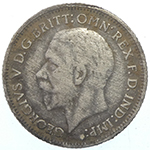 |
||||||||
| 1892 Victoria milled silver sixpence | 1930 George V milled silver sixpence | ||||||||
1921 silver spoon - Birmingham nint |
|||||||||
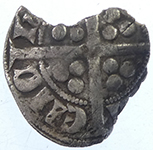 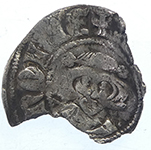 |
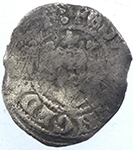  |
||||||||
Medieval hammered silver penny - Continental imitation , E(a) Sterling type Crockard , chaplet of rosettes |
1279 Edward 1st hammered silver penny Obv +EDW**NGL DN*** Rev CIVI/***/LON/D** - London mint |
||||||||
 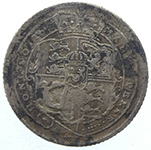 |
  |
||||||||
| 1816 Geoeg III milled silver sixpence | 1603 James 1st hammered silver penny | ||||||||
  |
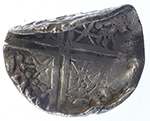  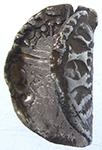 |
||||||||
| 1929 George V milled silver sixpence | Alexander II 1214-49 Scottish hammerd penny Obv ALEXANDER REX |
||||||||
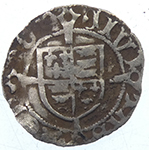 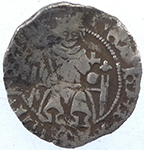 |
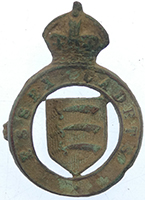 |
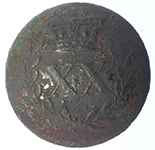 |
|||||||
1526-44 Henry VIII hammered silver penny Sovereign type Rev CIVI/TAS/LON/DON - London mint |
George V military Essex cadet badge | Description: Crowned XX within spray of leaves. Category: Regular Army; Type of button: Slightly convex 19mm ; Metal: Copper Alloy silvered; Backmark: Best Quality MS & ID; Date: 1800-1820 |
|||||||
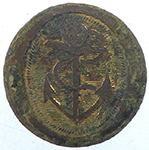 |
 |
 |
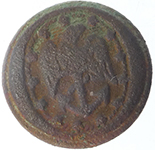 |
||||||
| RN Capt / Commander - 1787 RN Lieutenant - 1787 |
Victorian corporation button | 19thC Kings dragoon guards button | 1851 USA Navy button | ||||||
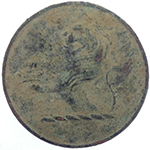 |
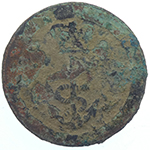 |
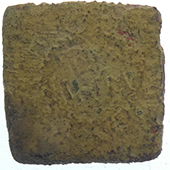 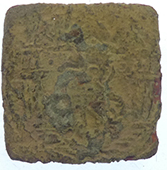 |
|||||||
| 19thC livery button | RN Capt / Commander - 1812 RN Lieutenant - 1812 |
16thC Antwerp hand coin weight | |||||||
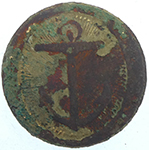 |
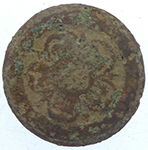 |
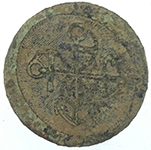 |
 |
||||||
| RN Capt / Commander - 1787 RN Lieutenant - 1787 |
Royal Navy Lieutenant - 1748 | RN Purser buttons
RN Purser - 1807 |
19thC livery button | ||||||
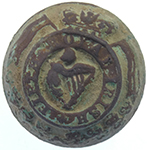 |
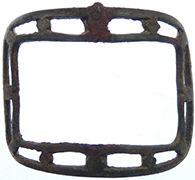 |
 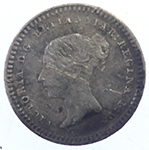 |
|||||||
| Victorian 5th Royal Irish regiment button | 1843 Victoria milled silver one and a half pence | ||||||||
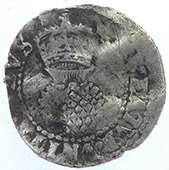 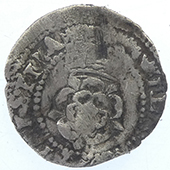 |
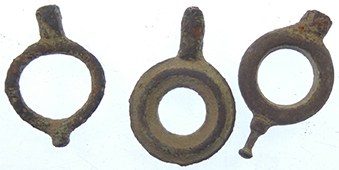 |
||||||||
| 16-3 James 1st hammered silver half groat | Georgian watch winders | ||||||||
 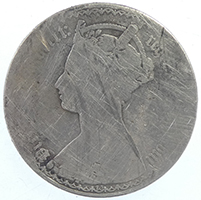 |
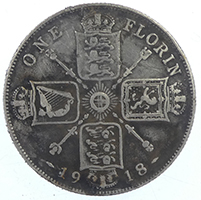 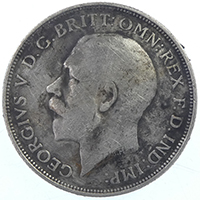 |
||||||||
| Victoria milled silver florin (24 pence) | 1918 George V milled silver florin (24 pence) | ||||||||
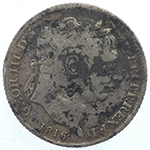 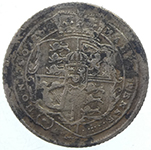 |
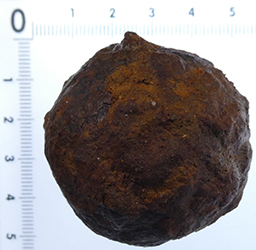 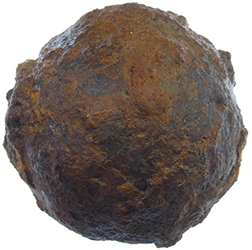 |
||||||||
| 1816 George III milled silver sixpence | 16thC Iron cannon ball - 2 inch | ||||||||
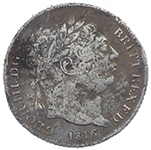 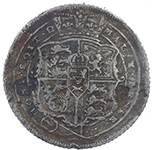 |
 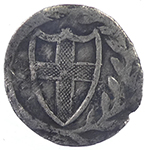 |
||||||||
| 1816 George | 1649 Commonwealth hammered silver penny | ||||||||
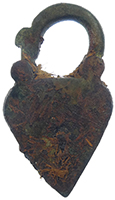 |
 |
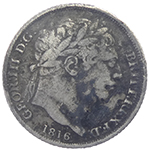 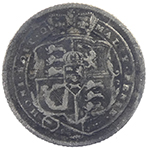 |
|||||||
| Georgian pad lock | Royal Regiment of artillery button Post 1802 type A garter strap inscribed Royal Artillery with the Royal crown above Georgian royal cipher 'GR' |
1816 George III milled silver sixpence | |||||||
|
|
||||||||
| 11,000 BC flint spear head | 11,000 BC flint scraper | ||||||||
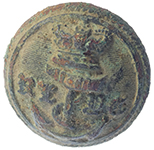 |
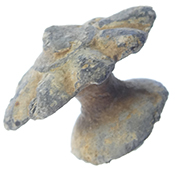 |
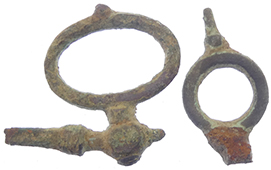 |
|||||||
| Victorian Royal London Yacht club | Georgian lead tobacco jar lid handle | Georgian watch winders | |||||||
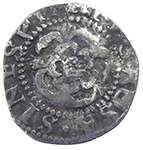 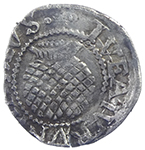 |
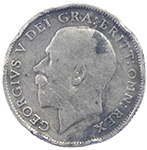  |
||||||||
| 1603 James 1st hammered silver penny | 1913 George V milled silver sixpence | ||||||||
  |
 |
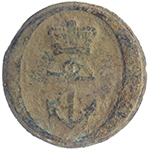 |
|||||||
| 1729 French Louis XV milled silver - 1/2 ECU (44 Sols) | 18thC toy cannon | RN Capt / Commander - 1812 RN Lieutenant - 1812 |
|||||||
 |
 |
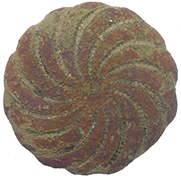 |
|||||||
| RN Master - 1807-1825 RN Ass't Master - 1807-1825 |
Georgian button | 1500-1700 mount | |||||||
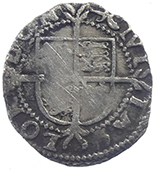 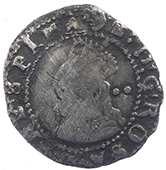 |
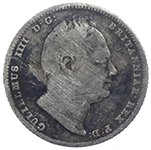  |
||||||||
| 1598-1600 Elizabeth 1st hammered silver half groat - Anchor mint mark | 1835 William IV milled silver sixpence | ||||||||
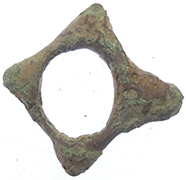 |
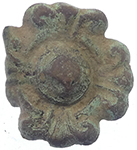 |
 |
|||||||
| C10thC Saxon hanress cheek piece | 1500-1700 mount | 18thC clog fastener | |||||||
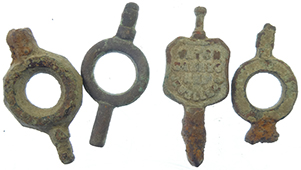 |
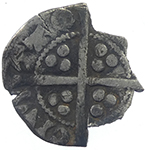 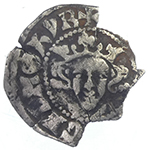 |
||||||||
| Georgian watch winders | 1279 EDward 1st hammered silver penny Obv + ****GL DNS hYB Rev CIVI/TAS*** |
||||||||
 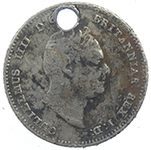 |
|
||||||||
| 1836 William IV milled silver four pence | Victorian silver vesta case | ||||||||
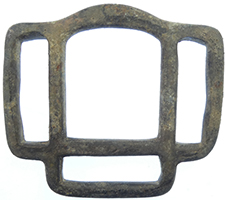 |
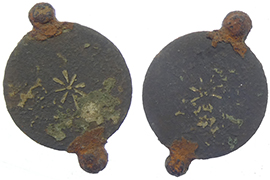 |
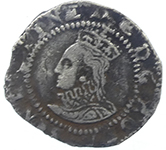 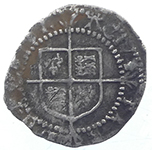 |
|||||||
| Victorian hanress buckle | Unknown widgets ? | 1582-4 Elizabeth 1st hammered silver penny - A mint mark | |||||||
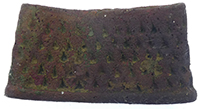 |
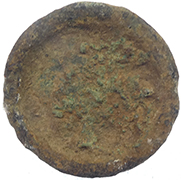 |
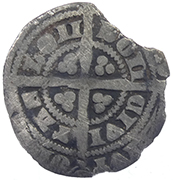 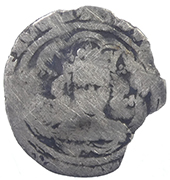 |
|||||||
| 15thC open topped thimble | Georgian trade weight | 1327 Edward III hammered silver half groat Obv +ED*** ANGL Rev CIVI/TAS/LON/DON - London mint |
|||||||
  |
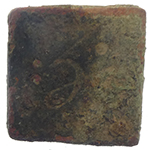 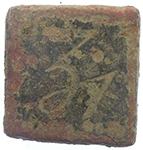 |
||||||||
| Plainsilver finger ring | 18thC apothecary weight | ||||||||
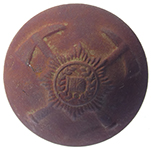 |
 |
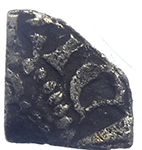 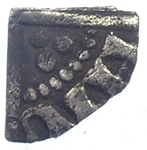 |
|||||||
| Victorian Fire Brigade button | 1855 on - Coldstream guards button | 1247 Henry III hammered silver voided long cross farthing | |||||||
 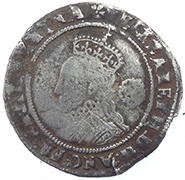 |
 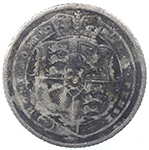 |
||||||||
| 1574 Elizabeth 1st hammered silver six pence | 1817 George III milled silver sixpence | ||||||||
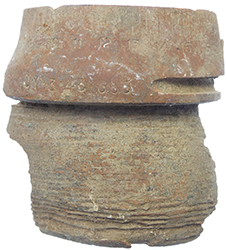 |
 |
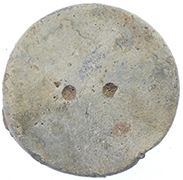 |
 |
||||||
| WWII AA flack shell fragment | 18thC crotal bell | Post medieval lead hem weight | 19thC livery button | ||||||
 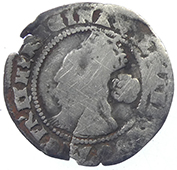 |
 |
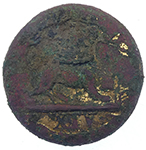 |
|||||||
| 1575 Elizabeth 1st hammered silver three pence | Unknown military button | 19thC - 14th Regimentt of foot button XIV |
|||||||
Celtic Torc ended shaped ring - not cetrain of the material but reporting it as potential treasure The Celtic tribes had gold, silver and bronze examples |
|||||||||
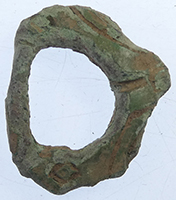  |
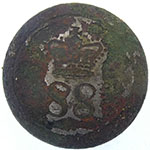 |
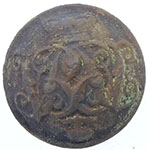 |
|||||||
| Medieval D buckle | Victorian 88th Regiment of Foot (Connaught Rangers) |
1803-1808 The Tenbury Wells volunteers were founded in 1803 and dispersed by 1808 originally listed as 'Tenbury' a 1 Company unit CO Capt Edward Wheeler and 100 strong. TWV |
|||||||
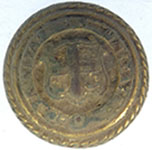 |
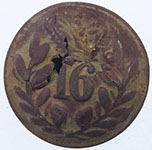 |
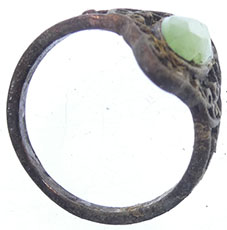 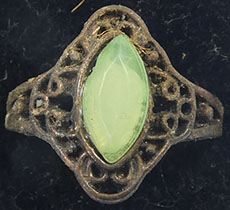 |
|||||||
| Corporation button | 16th Regiment of foot O/R's - 1855-1881 |
Edwardian alloy ring with green stone | |||||||
This appears to be a bronze loom shuttle fragment |
|||||||||
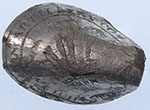 |
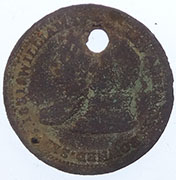 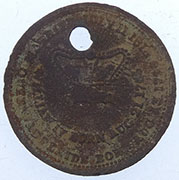 |
||||||||
Very rare early unrecorededHonourable Artillery Company Silver Plated Button
Prince of Wales feathers Hon Artillery Co' As the oldest regiment in the British Army, it was set up by Henry VIII back in 1537 to offer support to the now prestigious establishment. Since 1768, the HAC has provided Guards of Honour in the City for visiting members of the Royal Family, overseas Heads of State or Commonwealth Prime Ministers. |
William IV and Queen Adelaide, 1831 Coronation Medal |
||||||||
 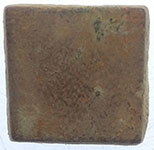 |
|
||||||||
18thC 5 pennyweight and 6 grains coin weight Obv DG 56 |
Medieval purse bar | ||||||||
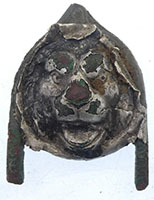 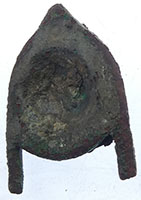 |
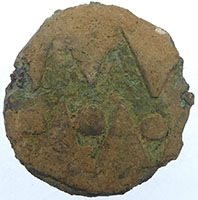 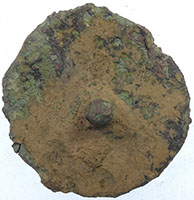 |
||||||||
| Victorian silvered strap end | Interesting large medieval mount -looks like enamelling | ||||||||
  |
  |
||||||||
| 1790's British Conder Token. Am I Not A Man And A Brother. Anti Slavery Token | 1216 Henry III hammered silver short cross half penny | ||||||||
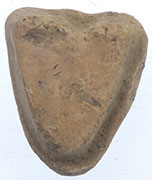 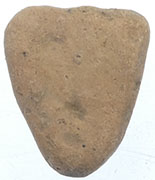 |
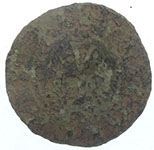 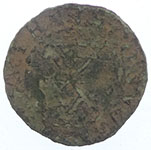 |
||||||||
| Medieval heraldic shield type lead trade weight | 17thC Jacob Vol, bay maker of Colchester hammered copper trade farthing | ||||||||
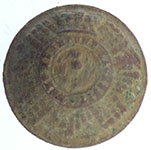 |
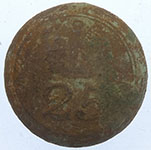 |
  |
|||||||
Scots Fusilier Guards |
19thC 25th Regiment of foot button | 1772 coin weight 2 pennyweight and 16 grains - half gold guinea | |||||||
 |
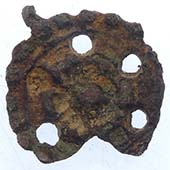 |
|
|||||||
| Medieval Knights Templar badge | 16th Tudor clothing fastener | Medieval knop ended knife handle | |||||||
Leaf-shaped sword, 1000-800 BCE. Bronze Age weapons have been discovered across Europe. They show how important warriors were in these early metal-working communities. Weapons have changed over time. At first flat daggers and knives were the most typical. These were followed by dirks and rapiers for stabbing and thrusting. Towards the end of the Bronze Age, the first true slashing swords became the weapons of choice. Bronze spearheads were also used. 3,700 years ago they replaced bows and arrows as the most common projectile weapon. Leaf-shaped, with grooved and bevelled edges. The handle-plate is T-shaped and contains two rivet-holes, with one rivet remaining, and a depression for a third hole, but not actually bored. There were to have been two holes in the shoulders, but only the lower has been bored in each case.
Late Bronze Age sword 85.66mm L x 36.89m W x 8.66mm T 76.3g |
|||||||||
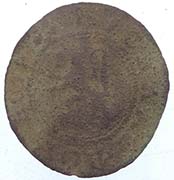 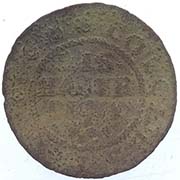 |
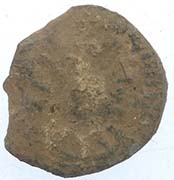 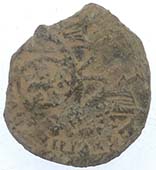 |
||||||||
| 1668 Richard 1668 Richard Boyse of Colchester hammered copper trade half penny | 4thC Roman bronze with interesting obv sent for ID | ||||||||
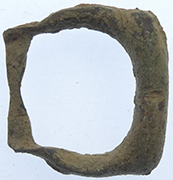 |
 |
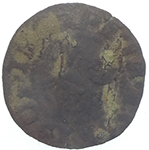 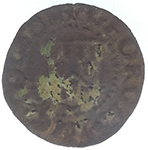 |
|||||||
| Medieval buckle | Georgian silver button - Maker WI | 1656 George Jeffries Grocer of Colchester hammered copper trade weight | |||||||
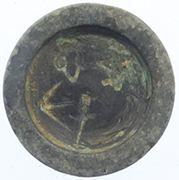 |
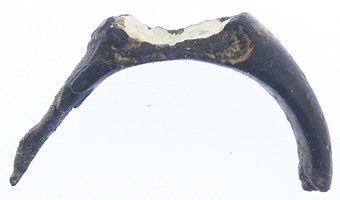 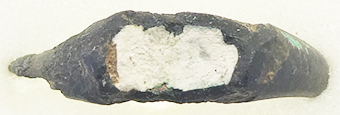 |
||||||||
| Georgian trade weight | Roman ring | ||||||||
1811 Norwich Castele - Norwich Condor penny ObverseTwo sheep out in the field, one lying right, one behind standing left. Lettering above, date in curved exergue, beaded border Script: Latin Lettering: ReverseLower view of castle on hill, wall and vegetation below. Lettering around, beaded border Script: Latin Lettering: NORWICH CASTLE
|
|||||||||
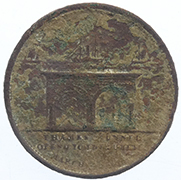 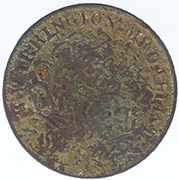 |
|||||||||
| William Warrington's London (Middlesex) brass medallion dated 1843. Obverse: Legend on six lines: "W. WARRINGTON, MEDALLIST. Engraver To Her Majesty 27 Strand". Reverse: Detailed view of the entrance of the new Thames Tunnel with boats and ships above and legend on three lines in exergue: "THAMES TUNNEL OPEN'D TO THE PUBLIC MARCH. 25. 1843". Plain edge. William Griffin was a medallist with a business in London. | |||||||||
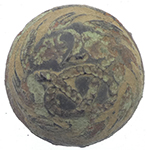 |
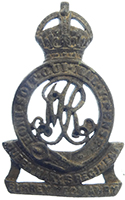 |
 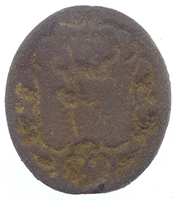 |
|||||||
Unknown 2nd regiment button Same design as Crowned 38 over 'Staffs' knot design. |
Surrey Yeomanry WW1 Surrey Yeomanry (Queen Marys) Regiment Cap Badge | Georgian double faced fob seal | |||||||
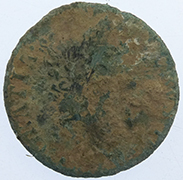 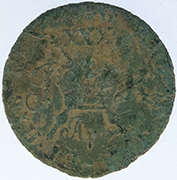 |
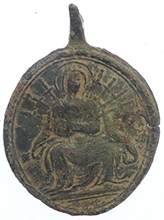 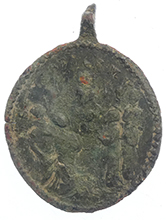 |
||||||||
April 1690 James II copper 30 pence - gun metal coinage ObverseScript: Latin Lettering: IACOBVS·II· DEI·GRATIA Unabridged legend: Jacobus II Dei Gratia Translation: James II By the grace of God. ReverseMonth under crown, date above. Script: Latin Lettering:
|
Victorian religious medallion | ||||||||
 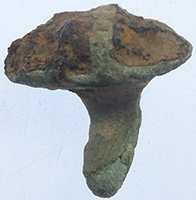 |
 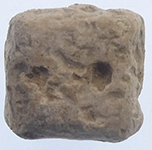 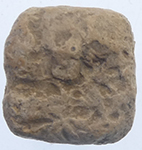 |
||||||||
| 2nd Roman fibular brooch | Roman lead dice | ||||||||
 |
 |
  |
|||||||
| Medieval mount | Medieval mount | 19thC Napoleon copper figurine | |||||||
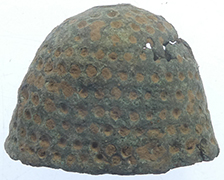 |
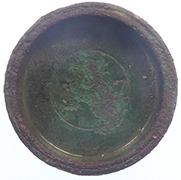 |
 |
|||||||
| 15thC thimble | Victorian 1 oz trade weight | Georgian trade weight - Crown G cipher 50mm dia - 105g, 3.7 oz |
|||||||
1300 BC Bronze Age socketed lance head 49 mm L x 11mm w 7.49g |
|||||||||
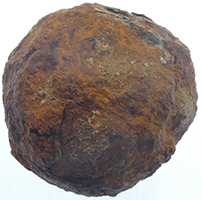 |
 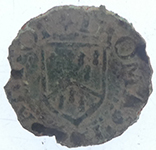 |
||||||||
| 1640's iron cannon ball | 17thC hammered copper trade farthing | ||||||||
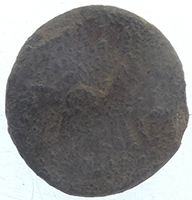 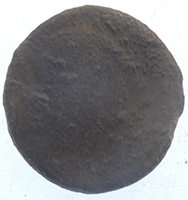 |
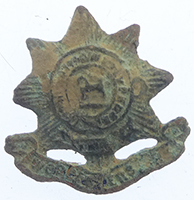 |
||||||||
| BC Roman silver coin - helmeted bust and chariot obverse type.- needs 'cooking' to remove crust | Worcester Regiment Officers Field Service Cap Badge | ||||||||
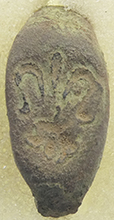 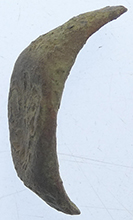 |
 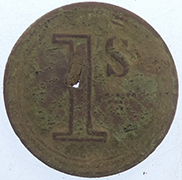 |
||||||||
| Medieval seal ring – Fleur de Lis impression | Victorian 1 shilling Stratford Market trade token | ||||||||
 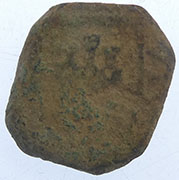 |
  |
||||||||
| SPANISH COIN - 1621-1626, LION & CASTLE, 8 MARAVEDIS, COPPER | 15thC Burgundy seated Lion coin weight | ||||||||
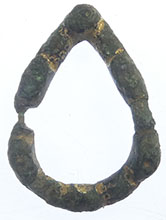 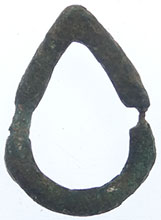 |
 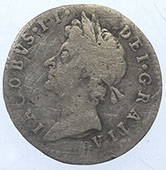 |
||||||||
| Medieval annular brooch - gilded decoration remains | 1687 James II milled silver three pence | ||||||||
Previous Sept 2023 finds page |
|||||||||
 |
|||||||||
